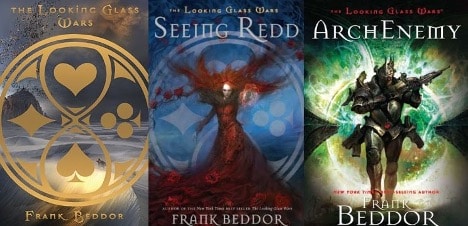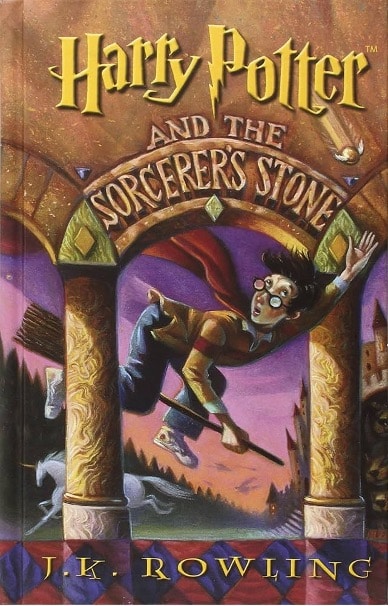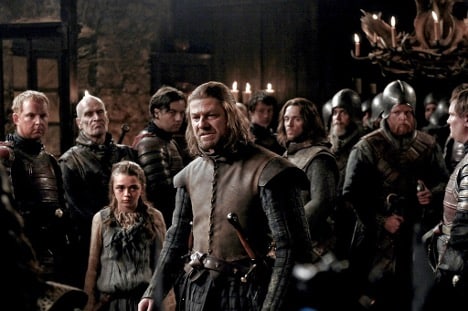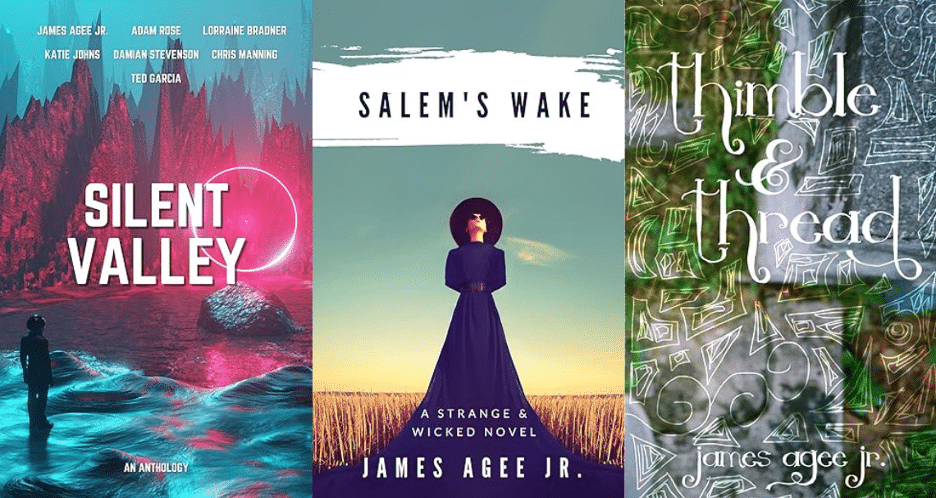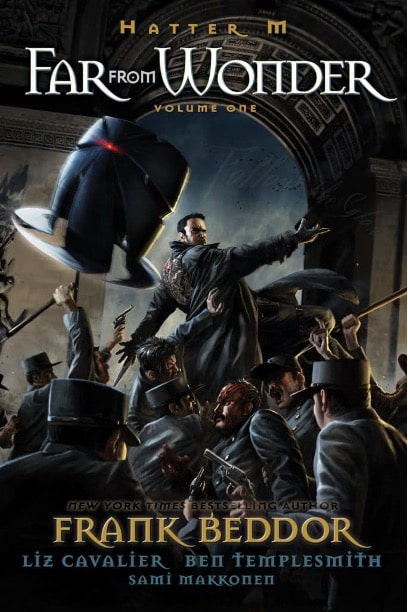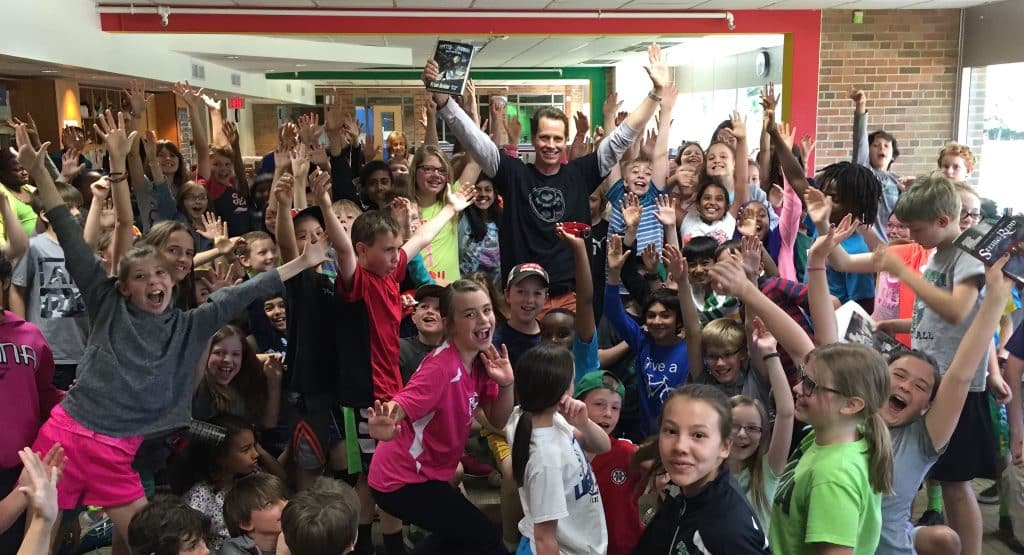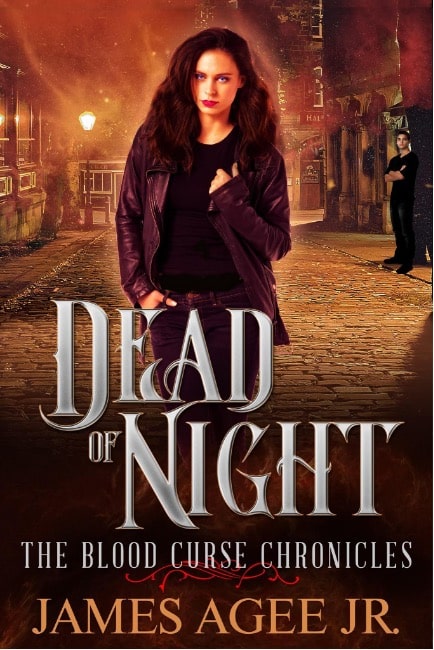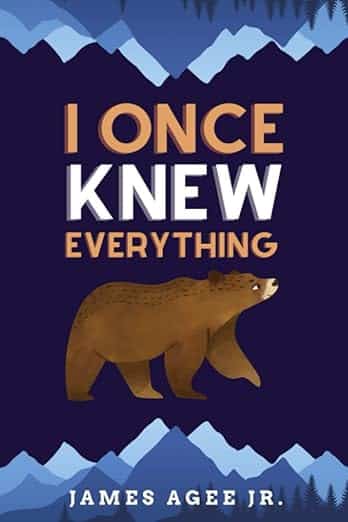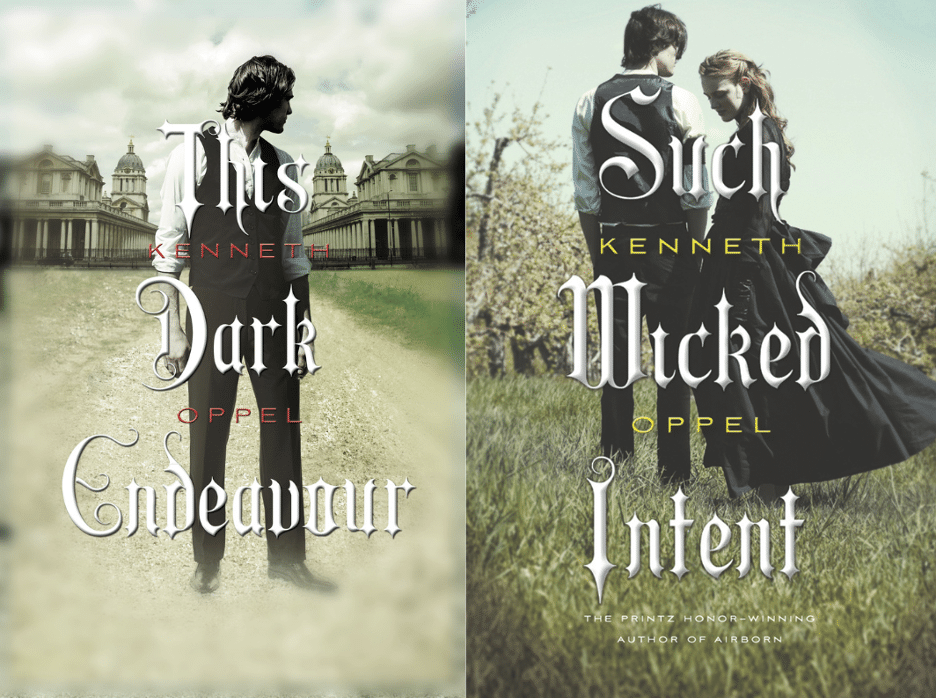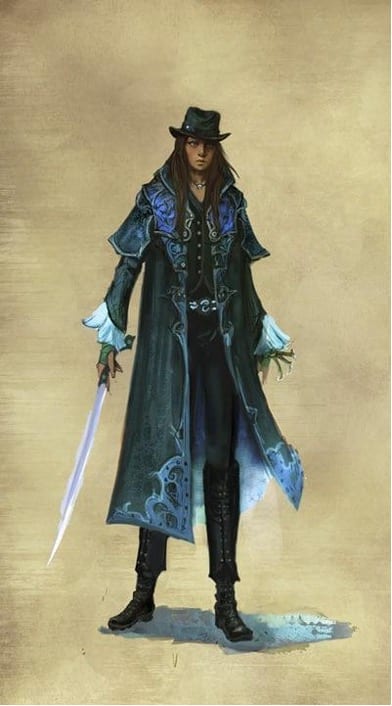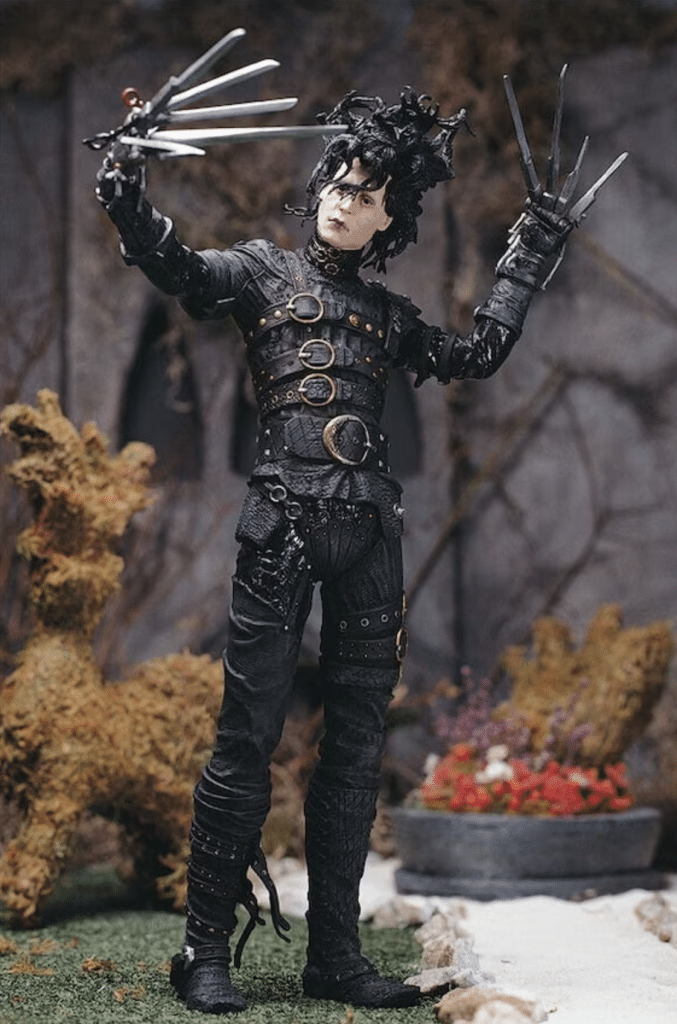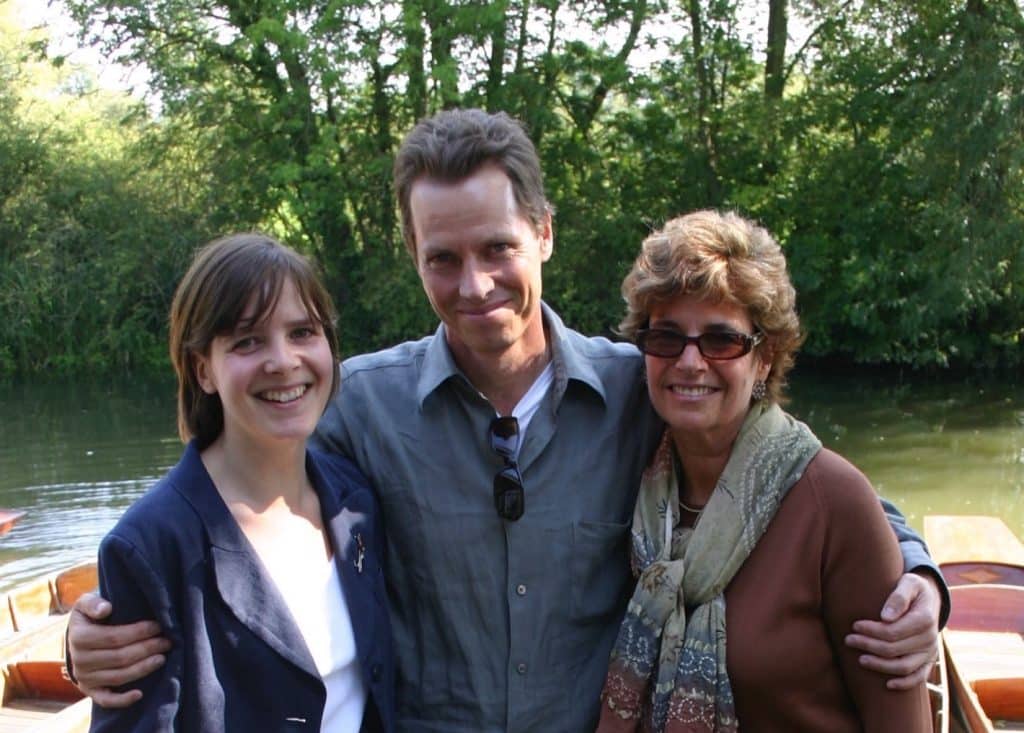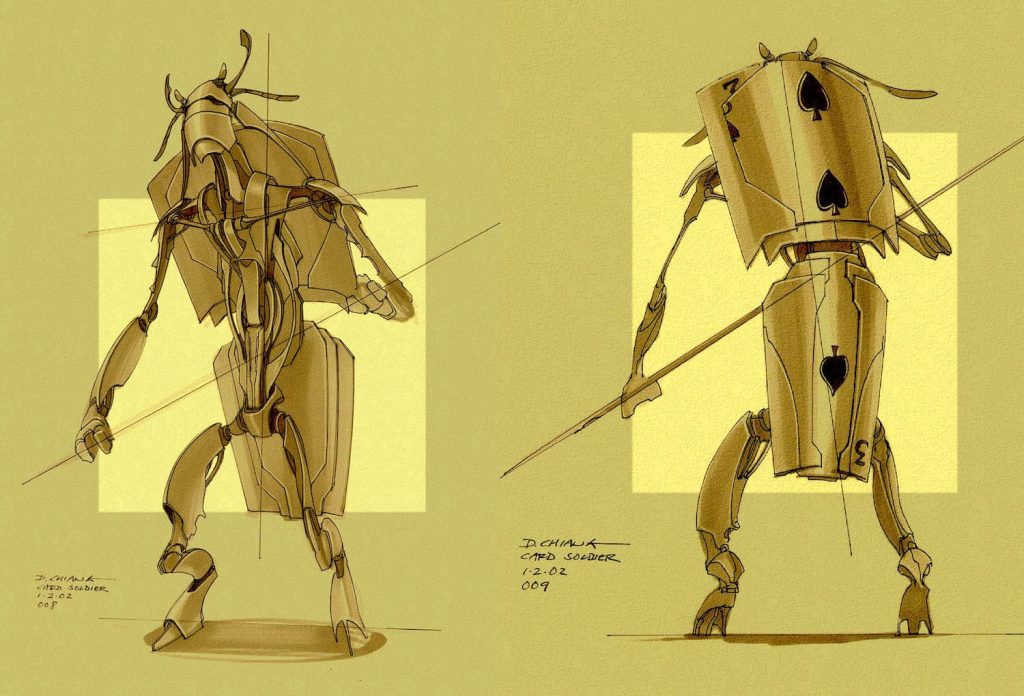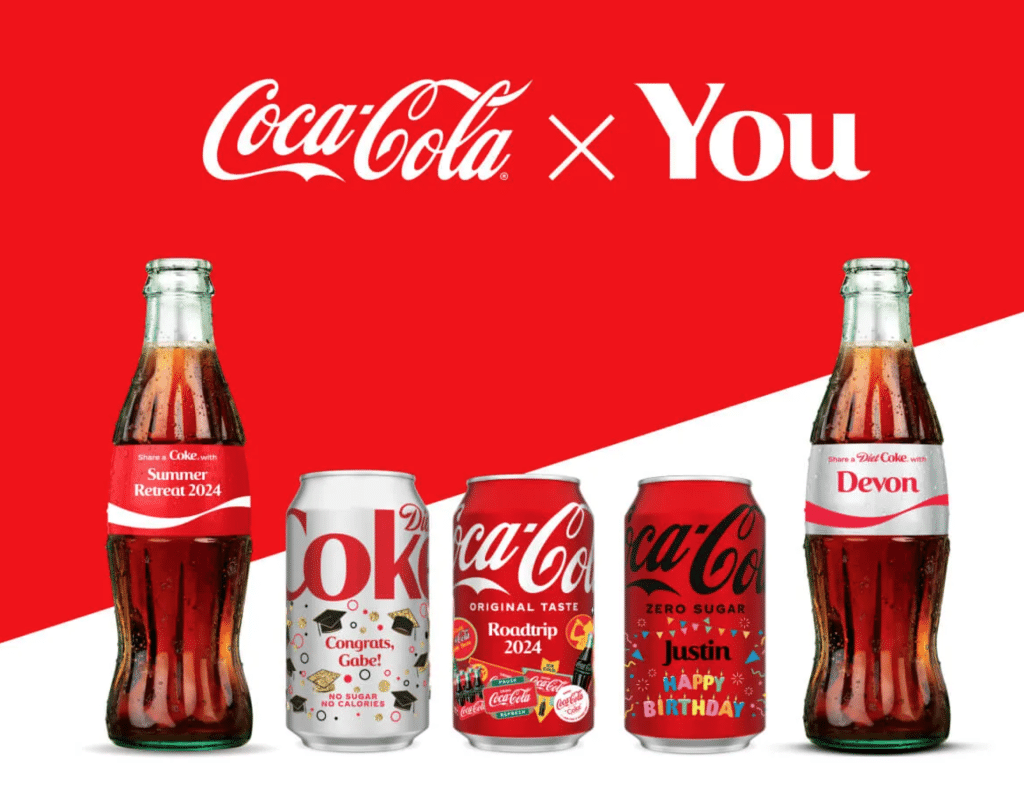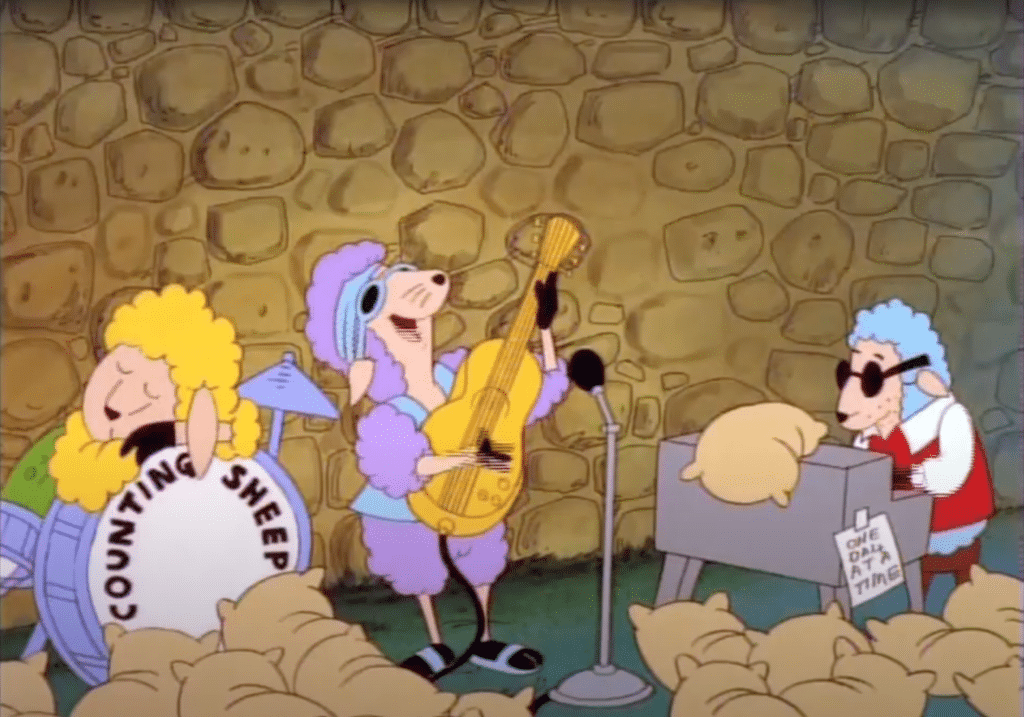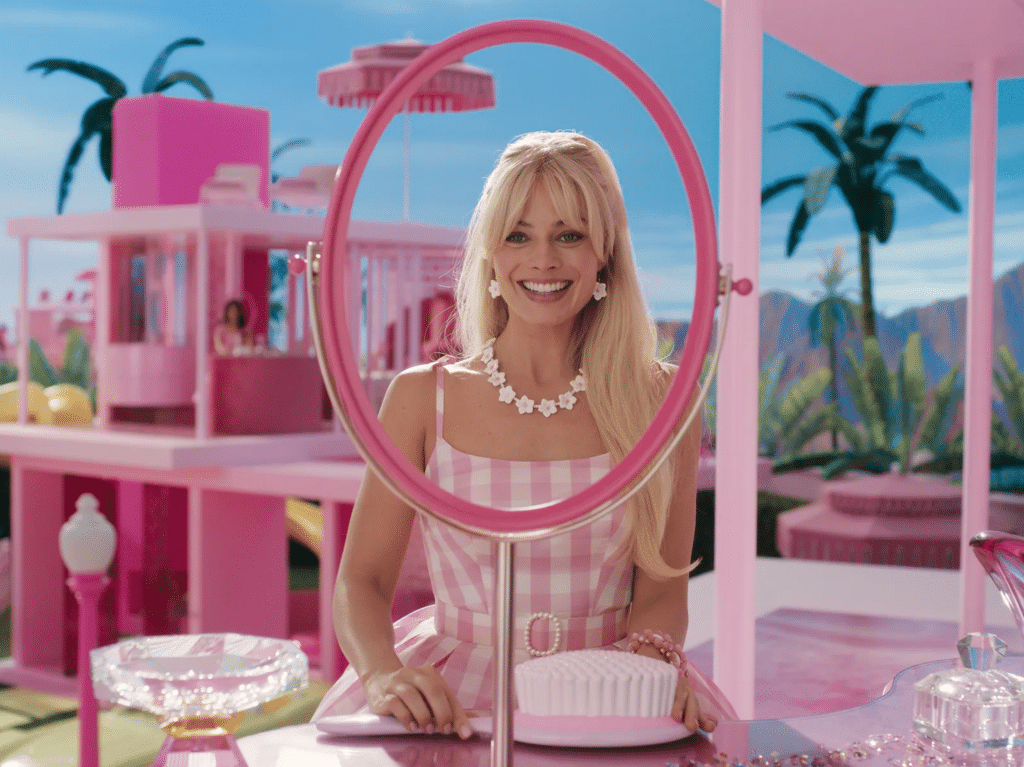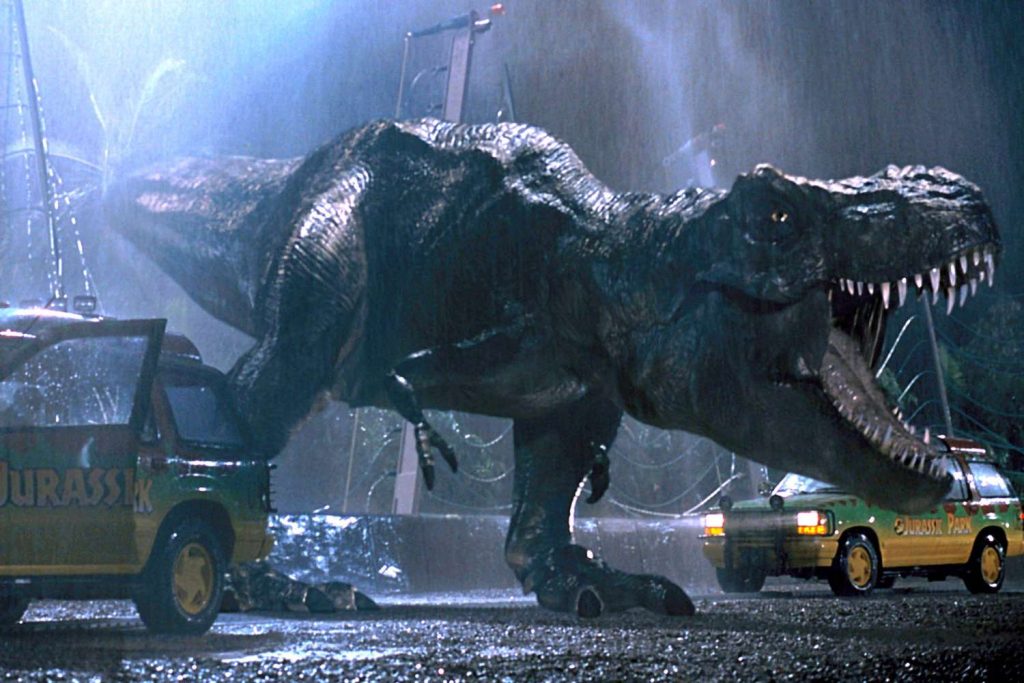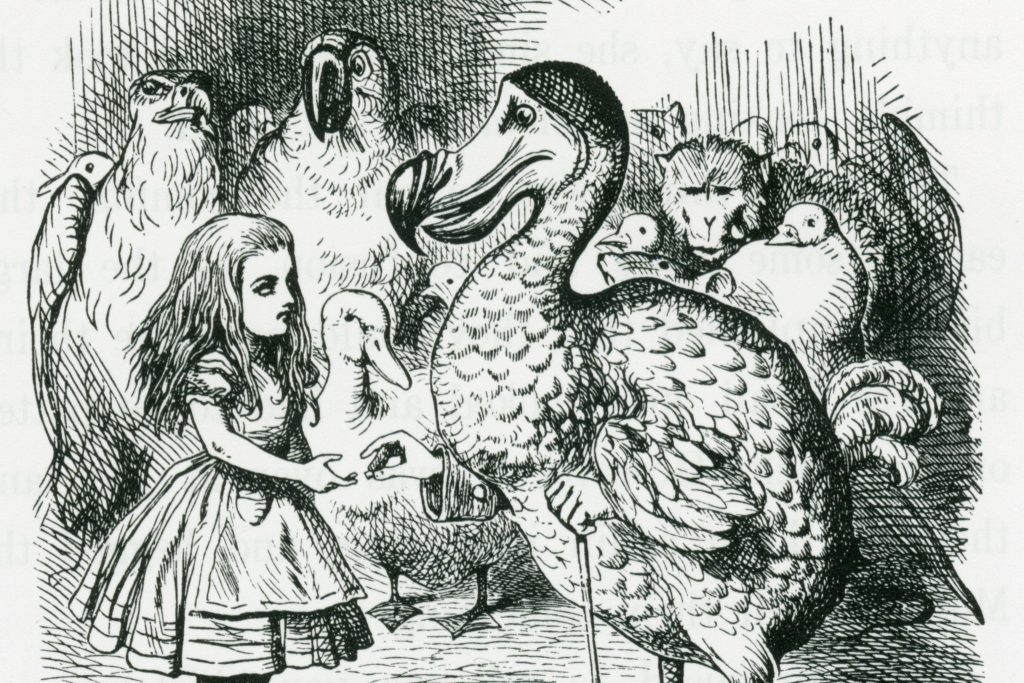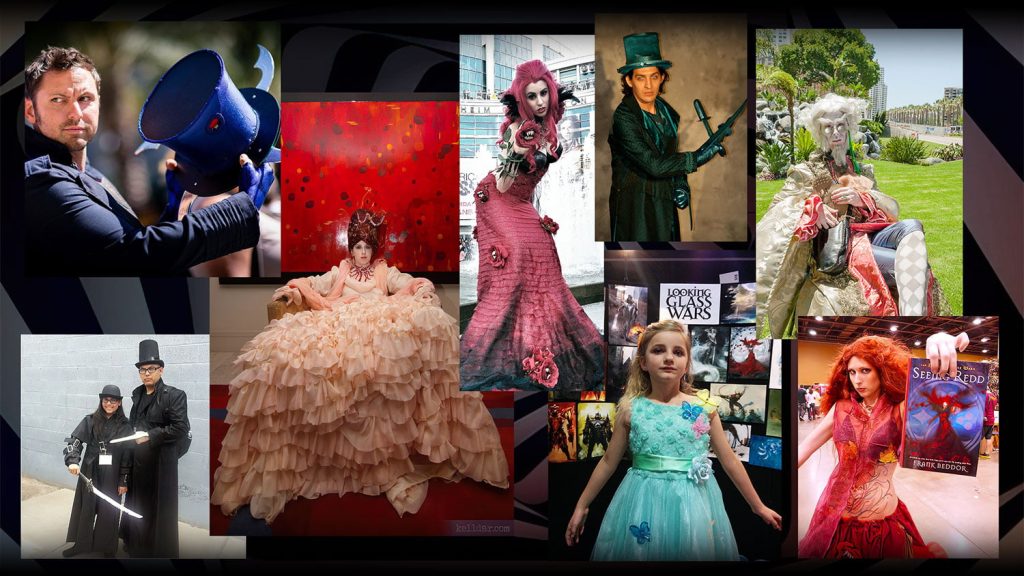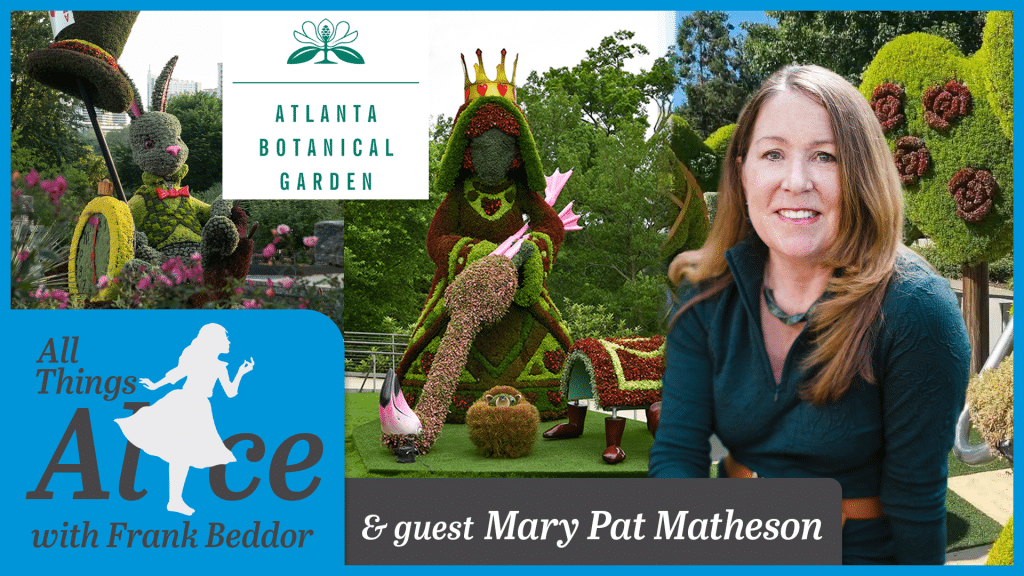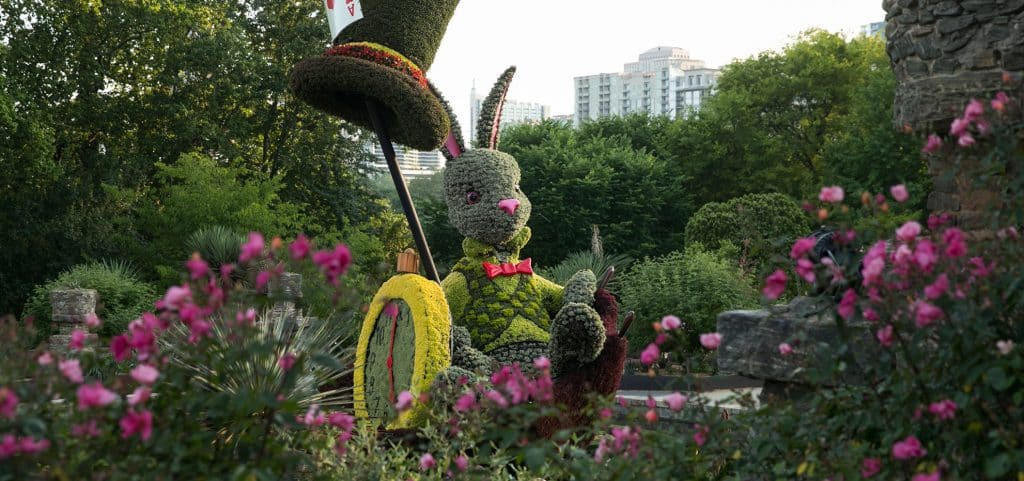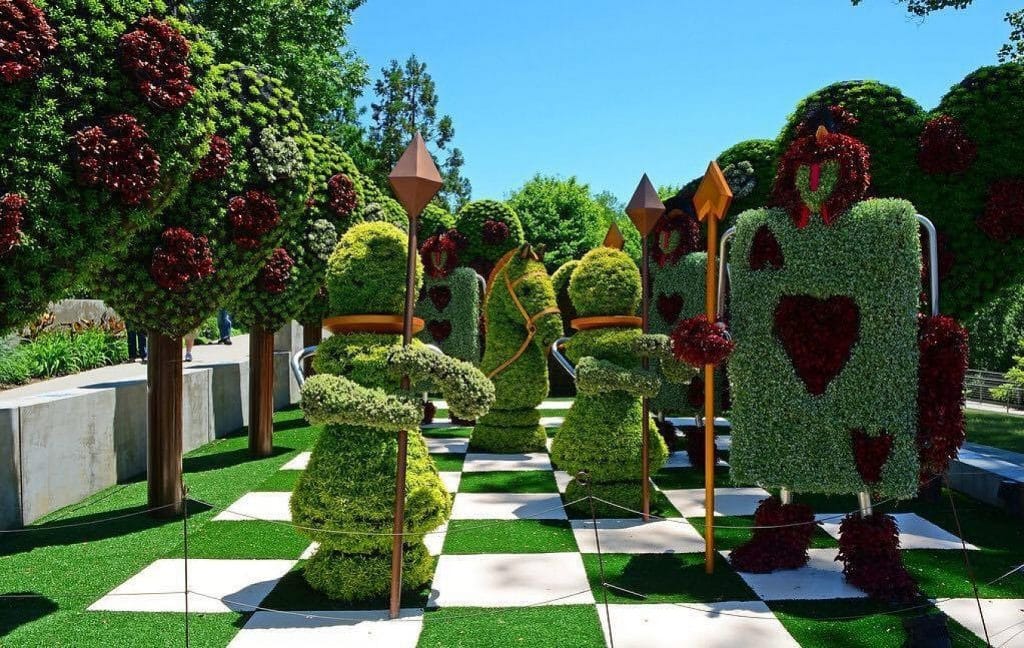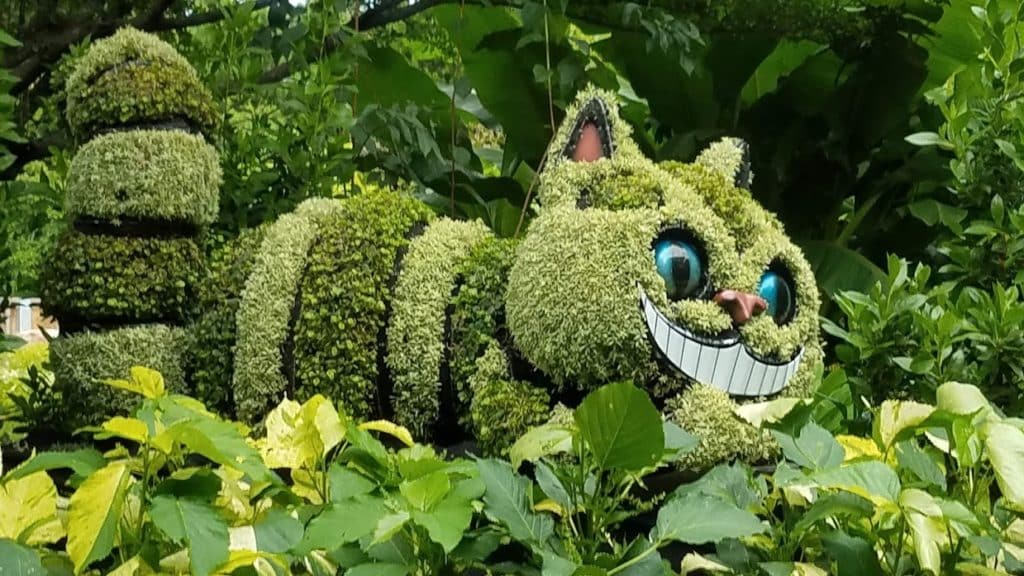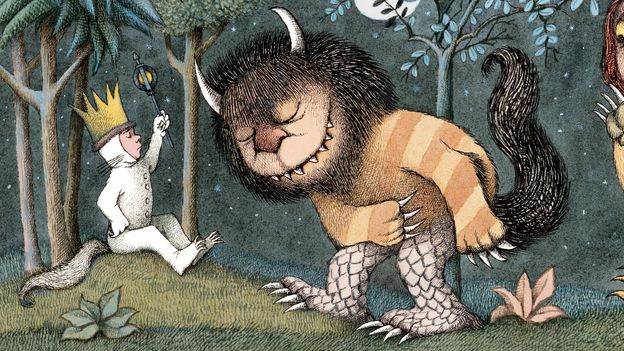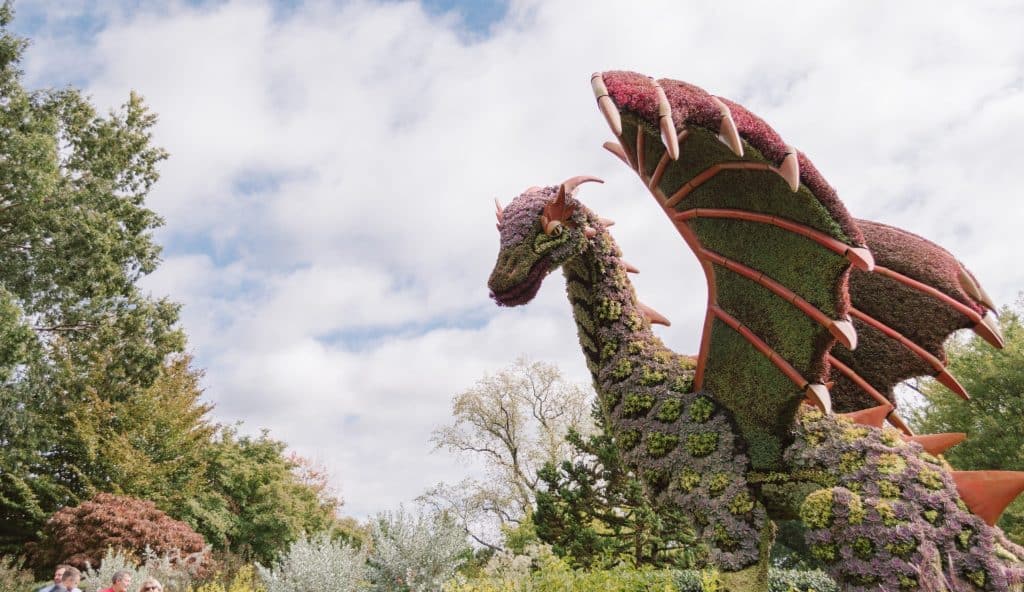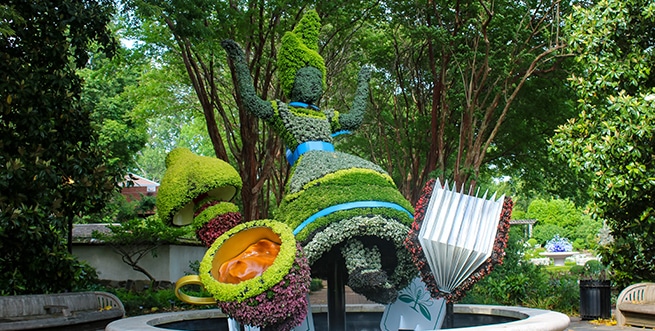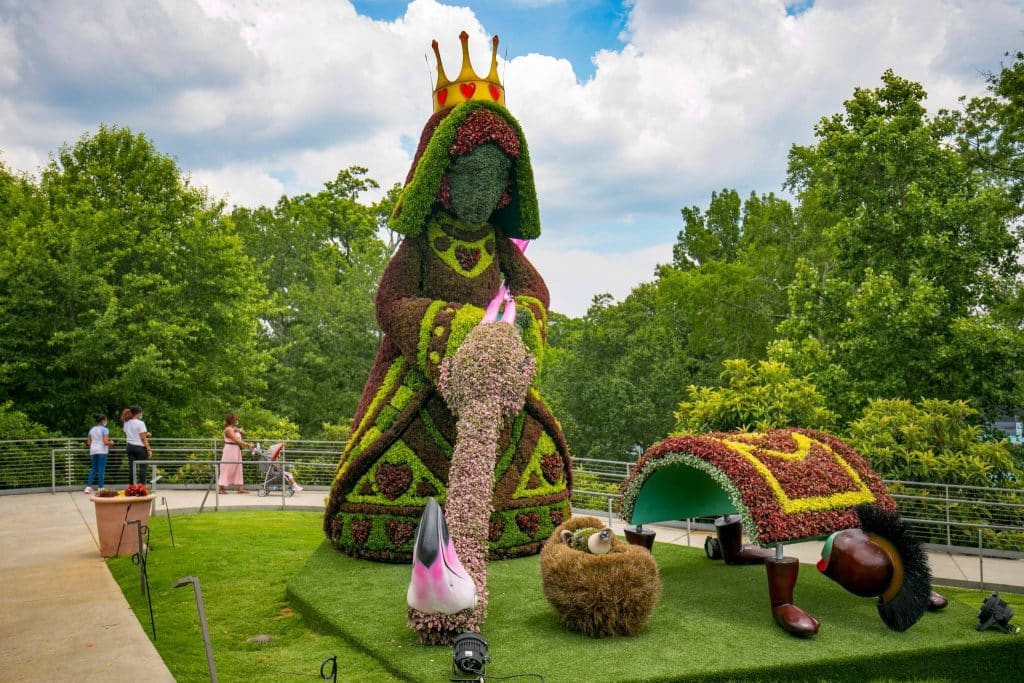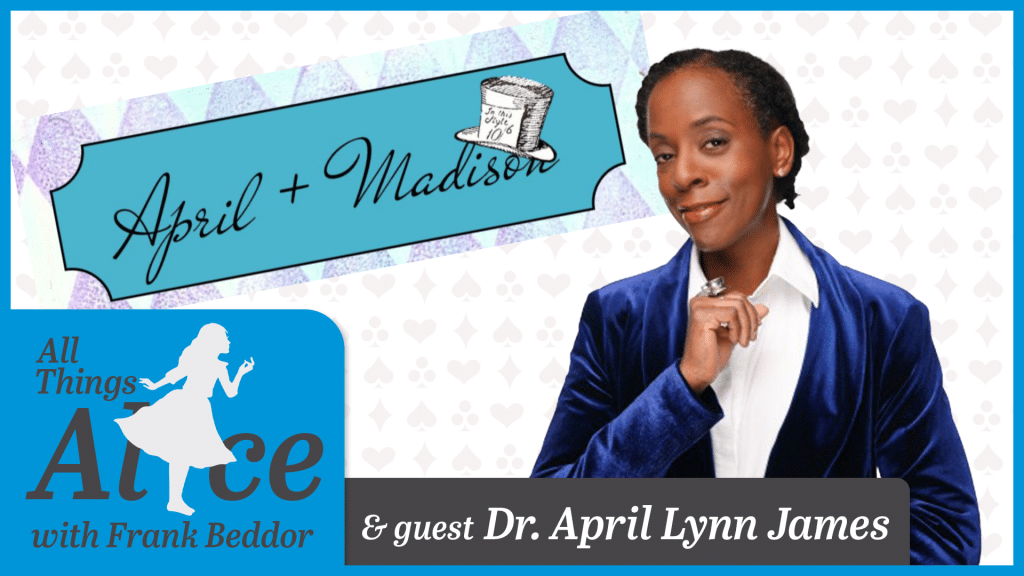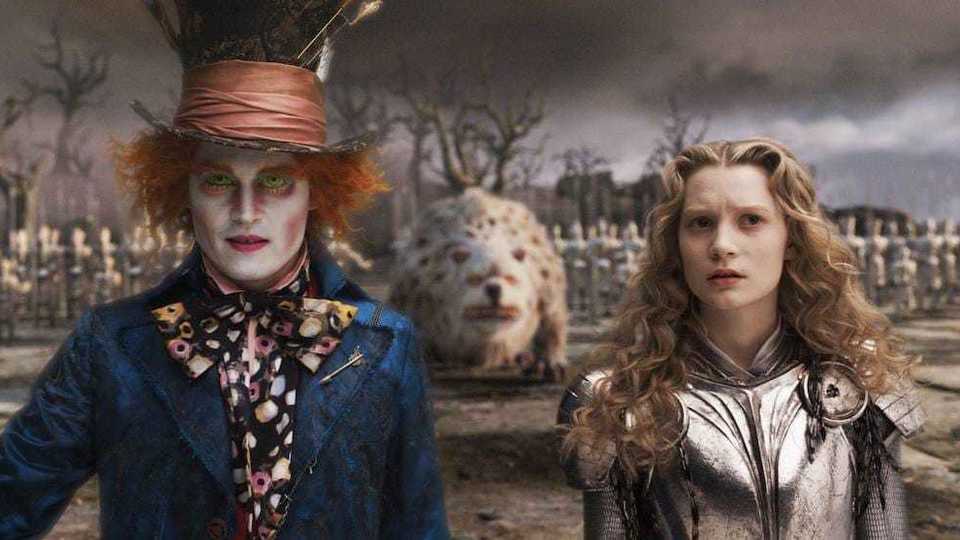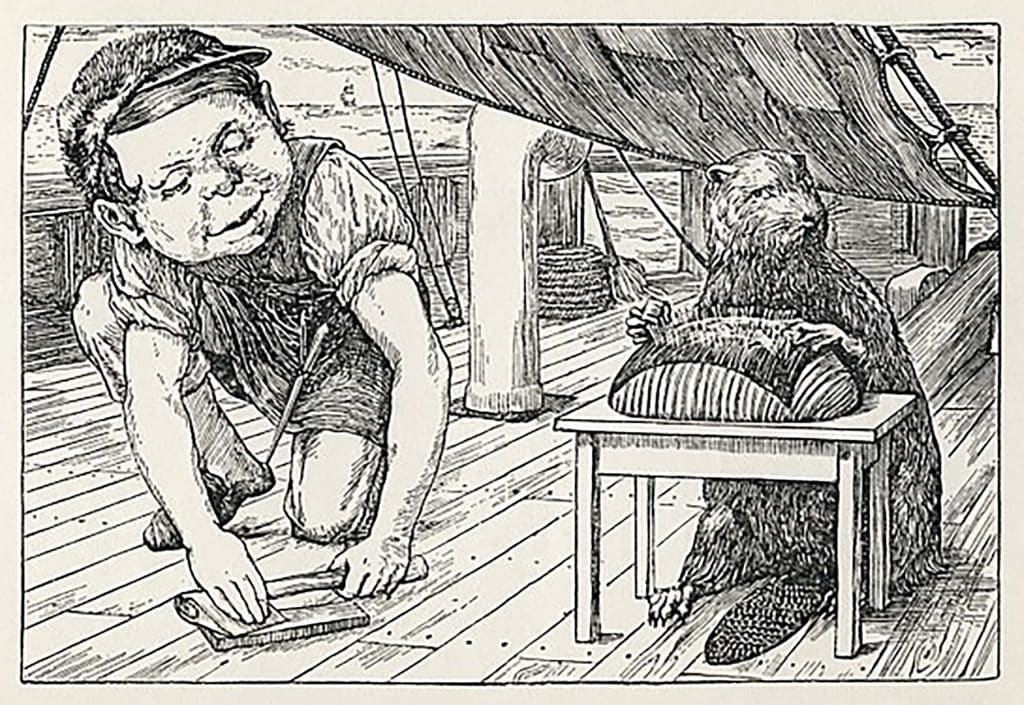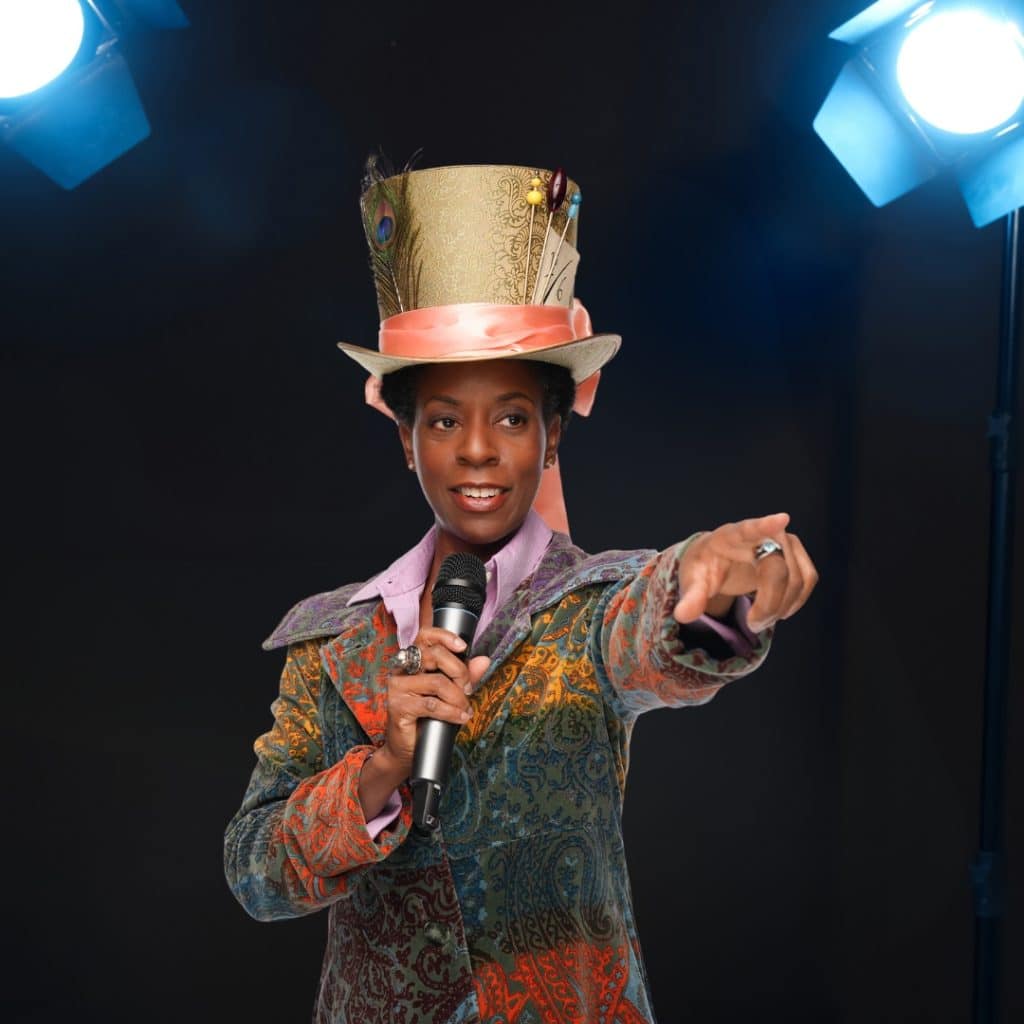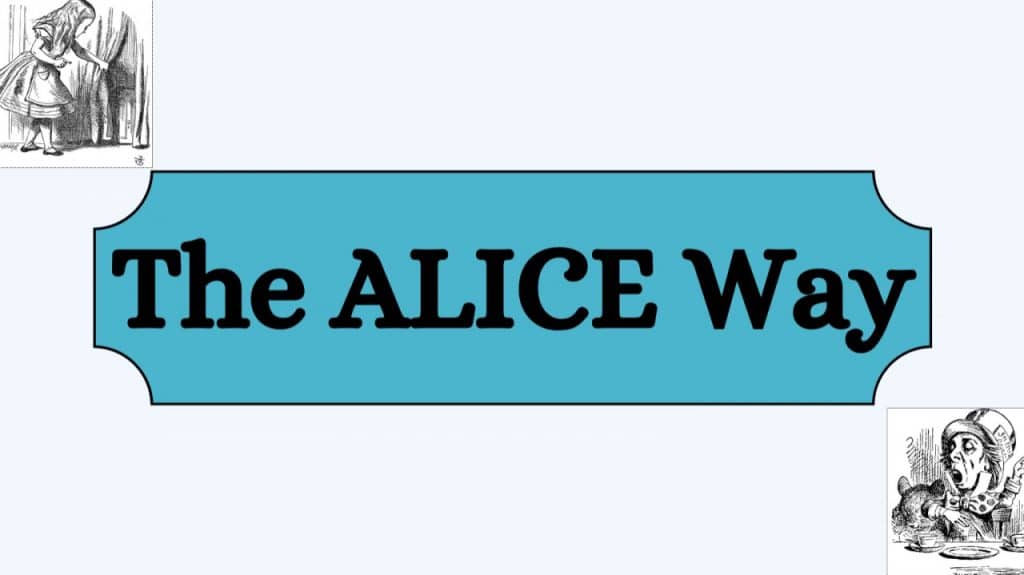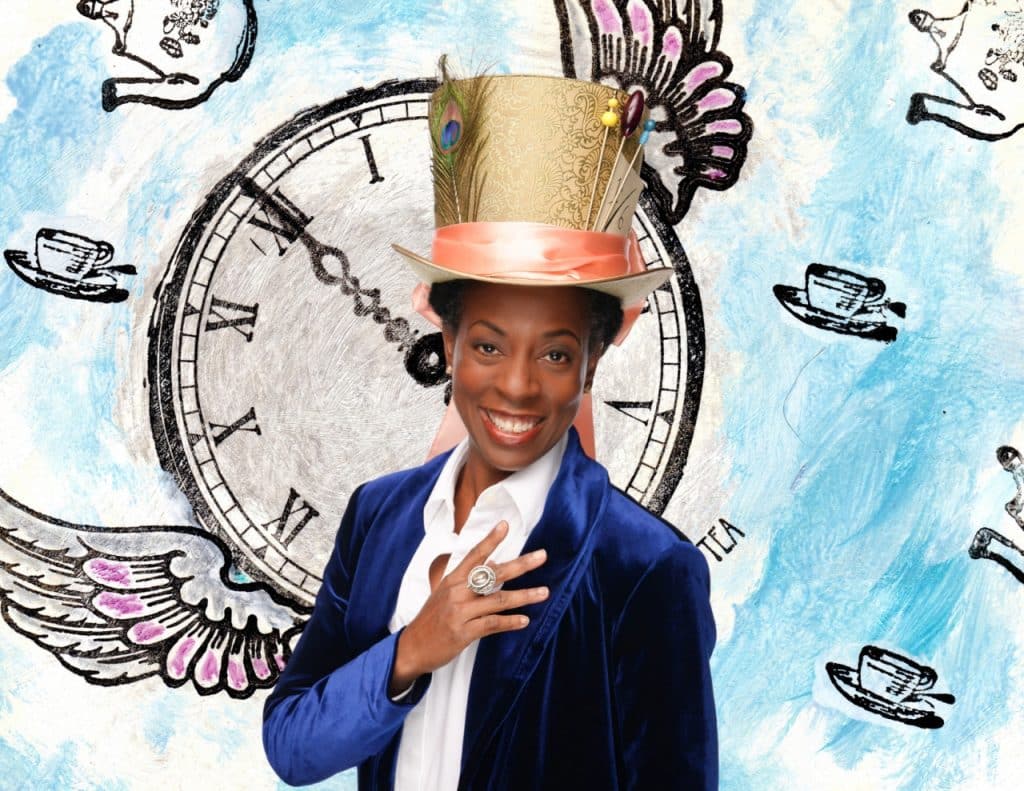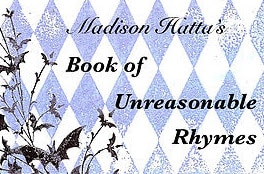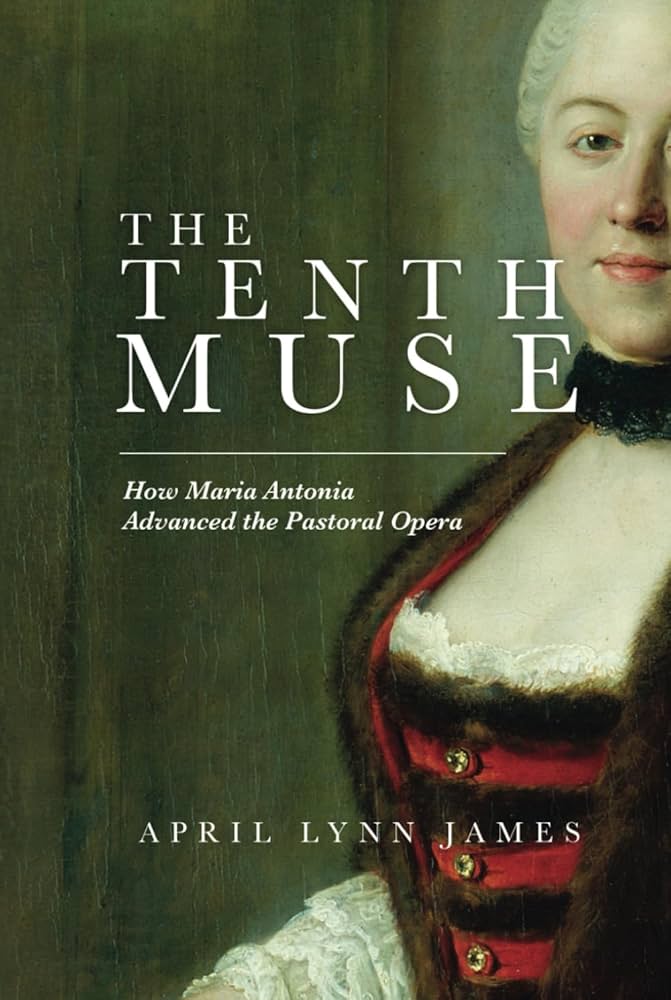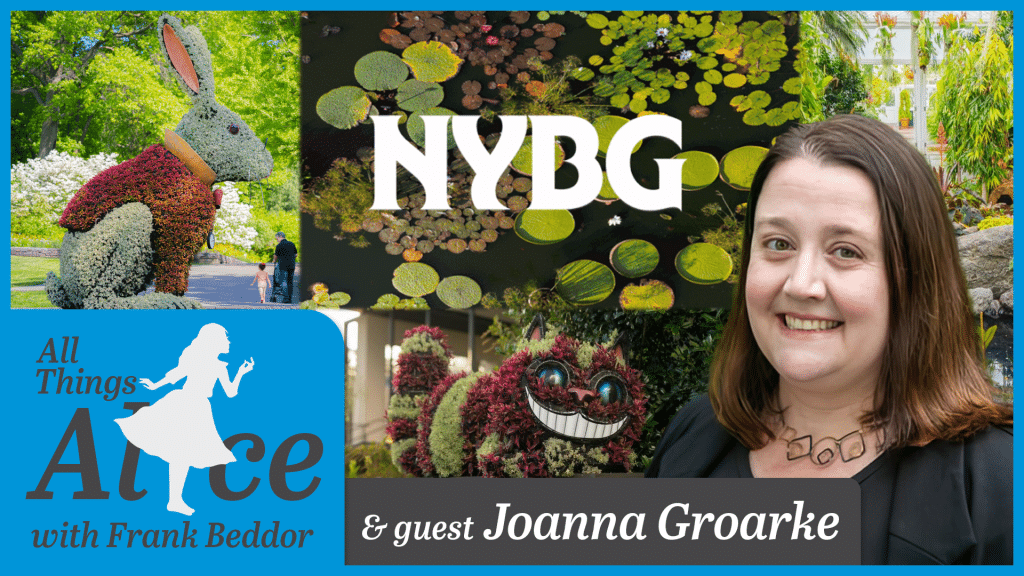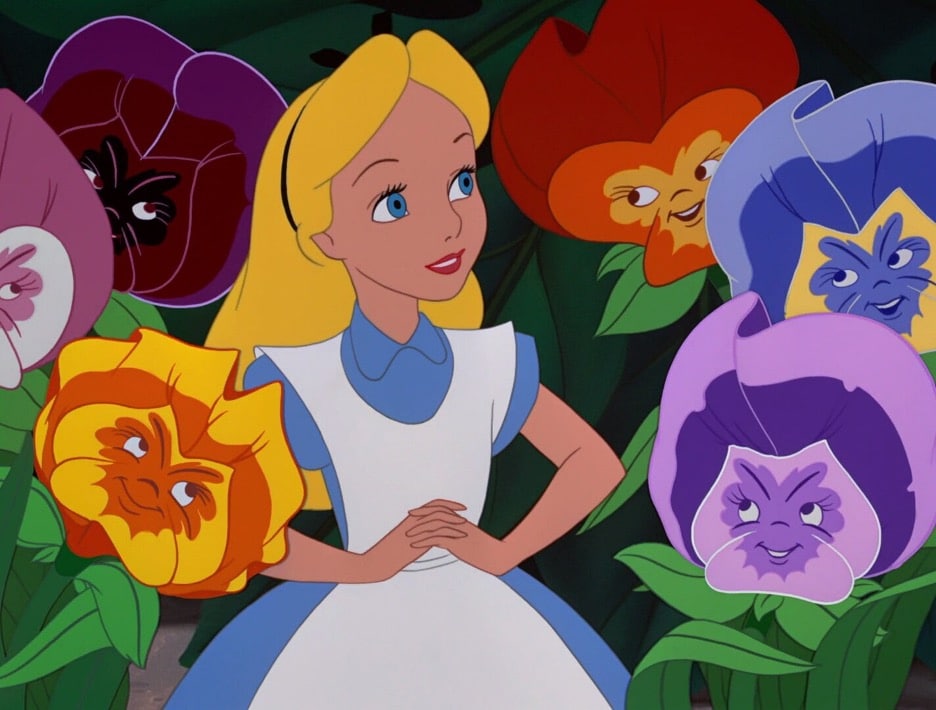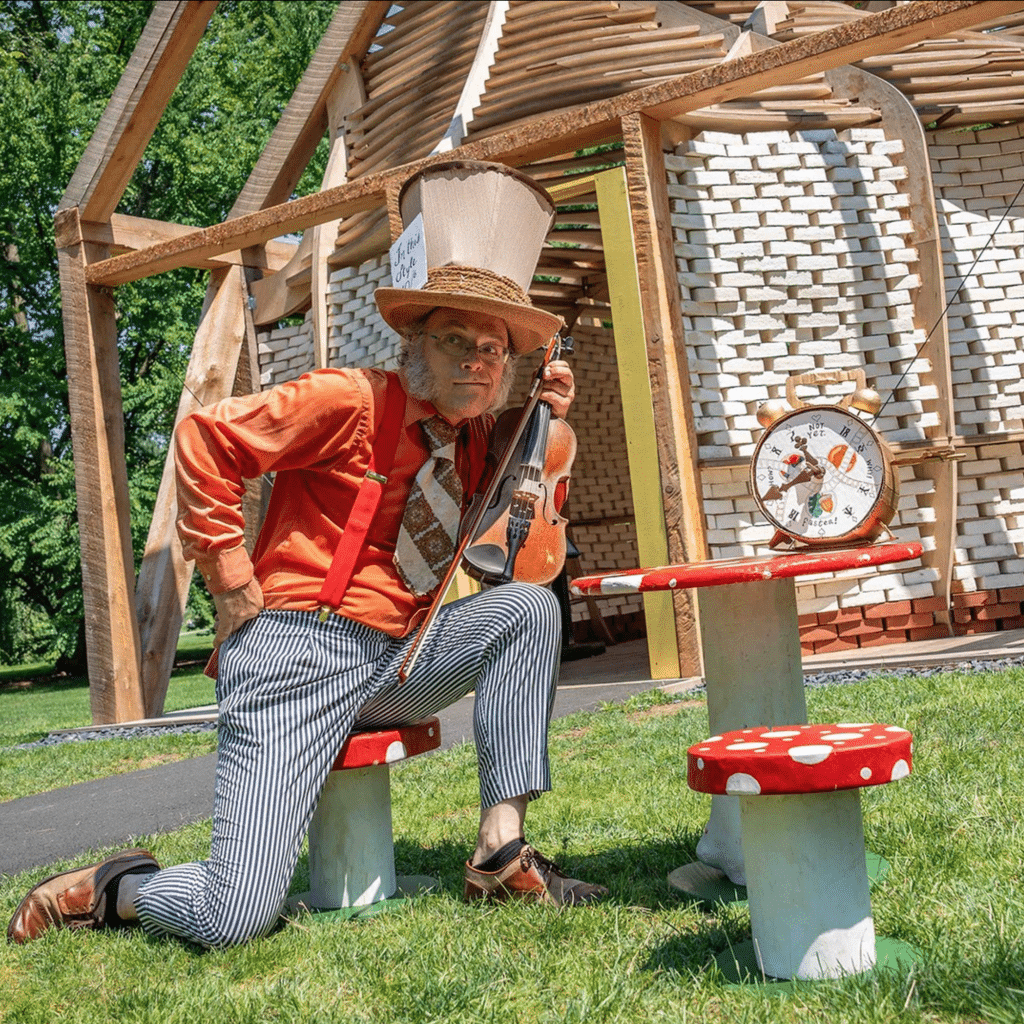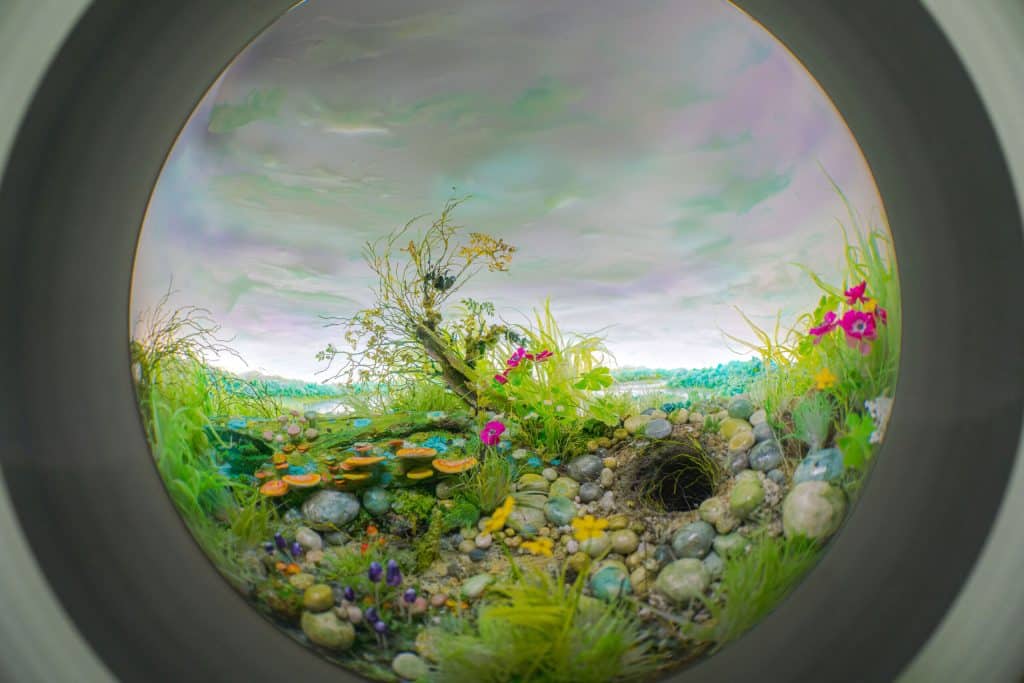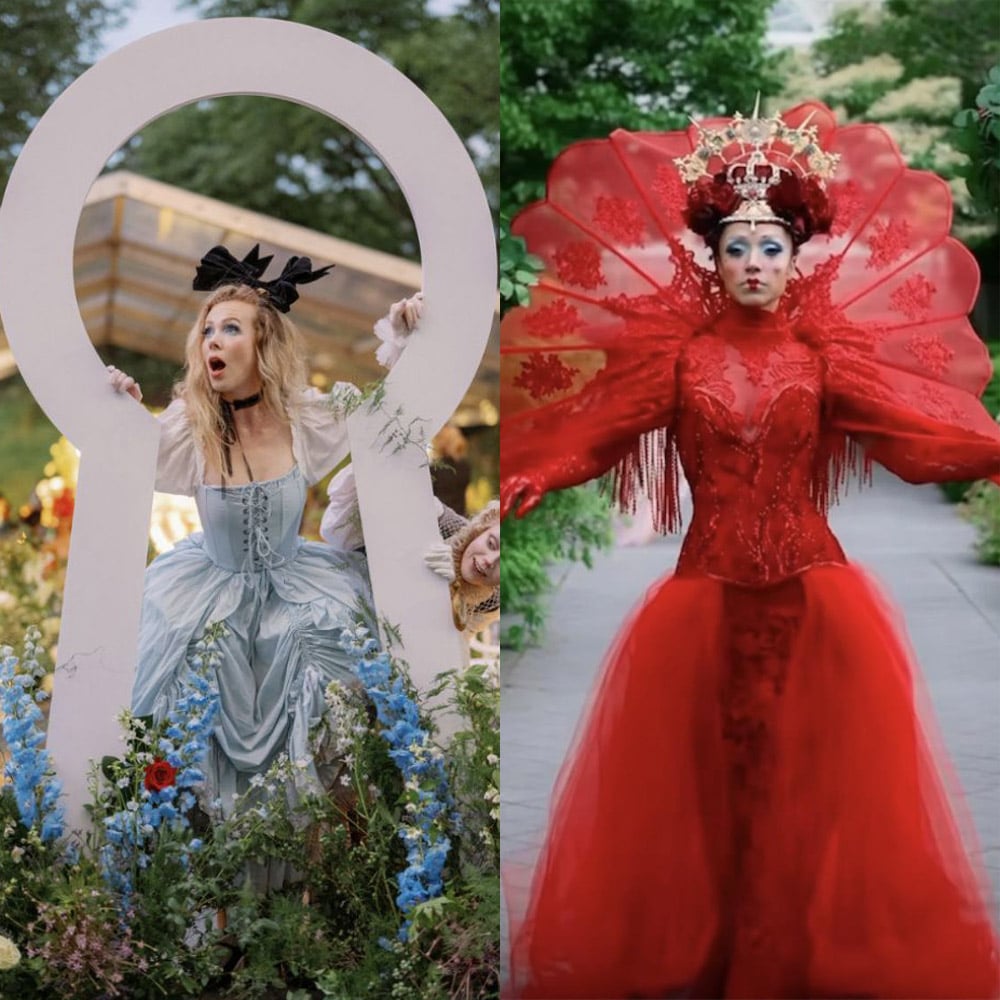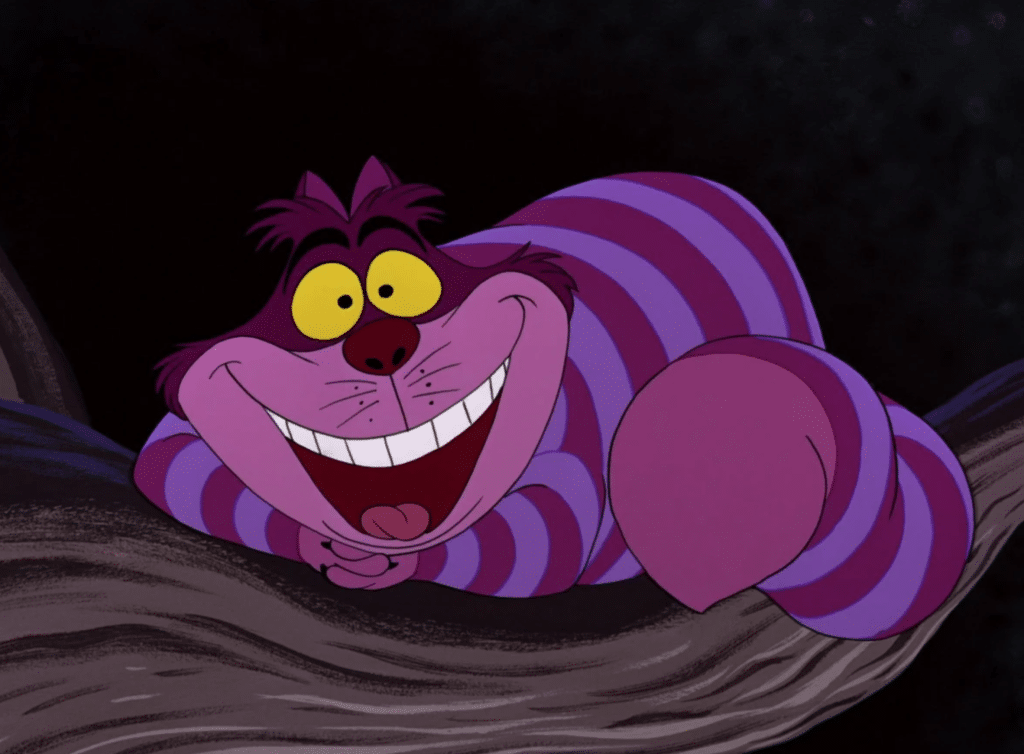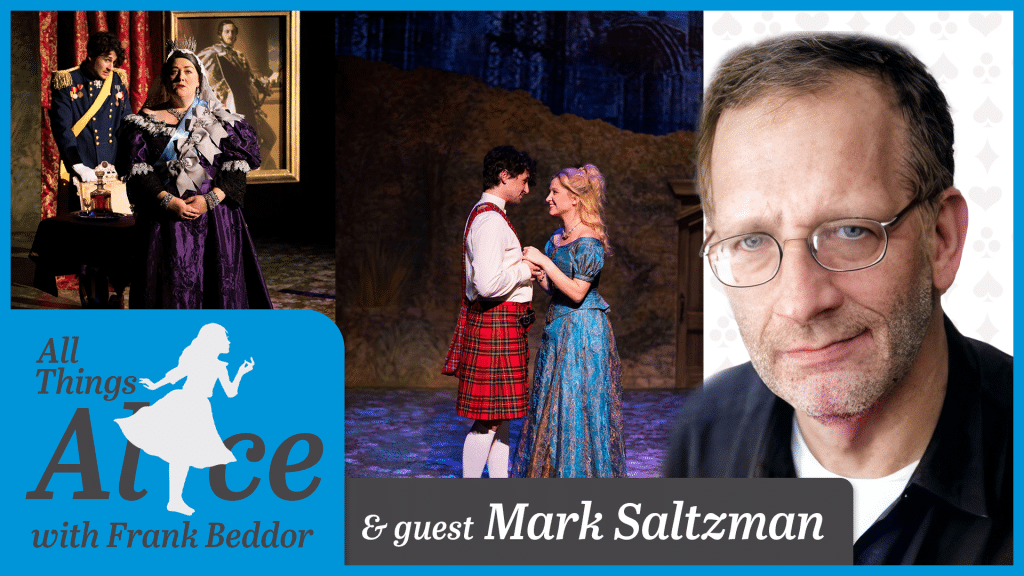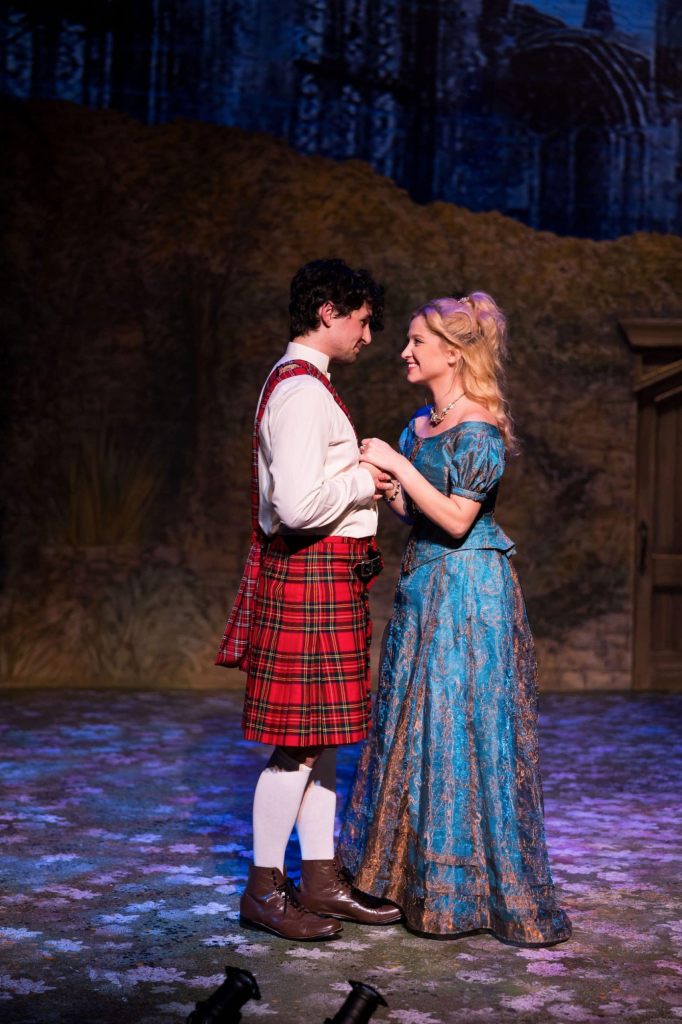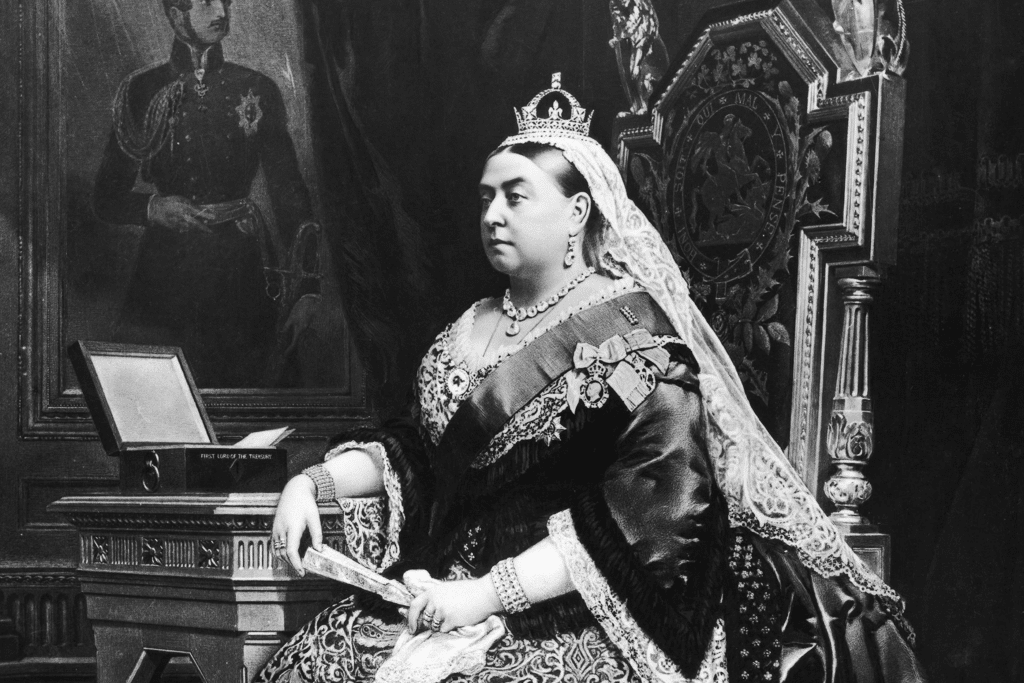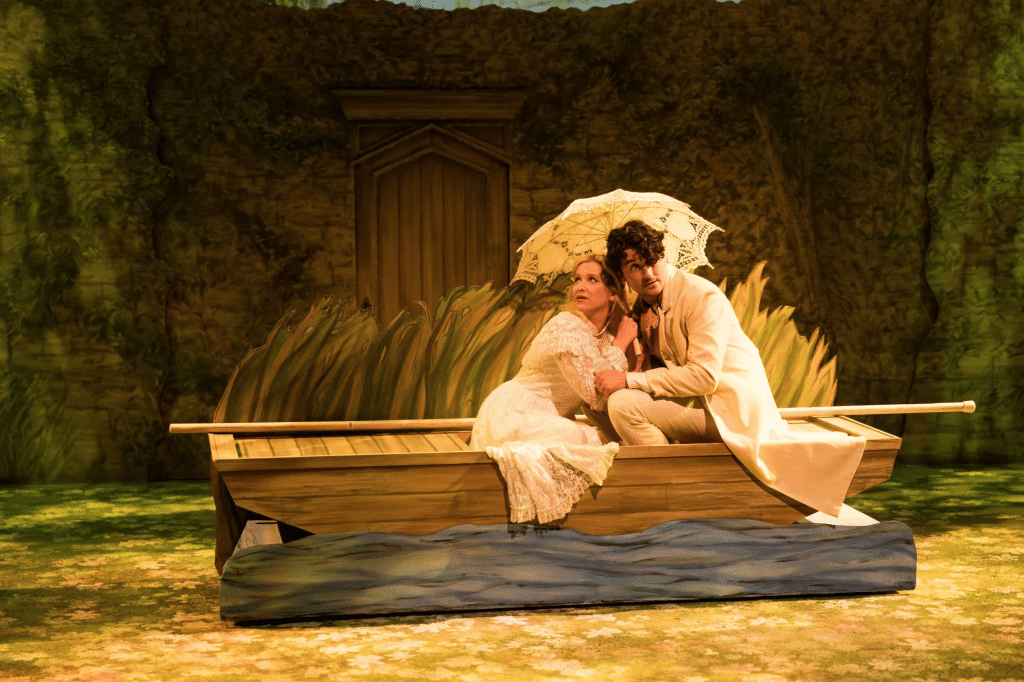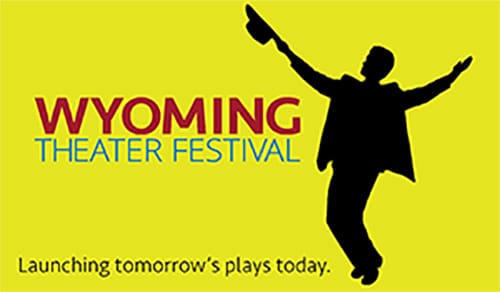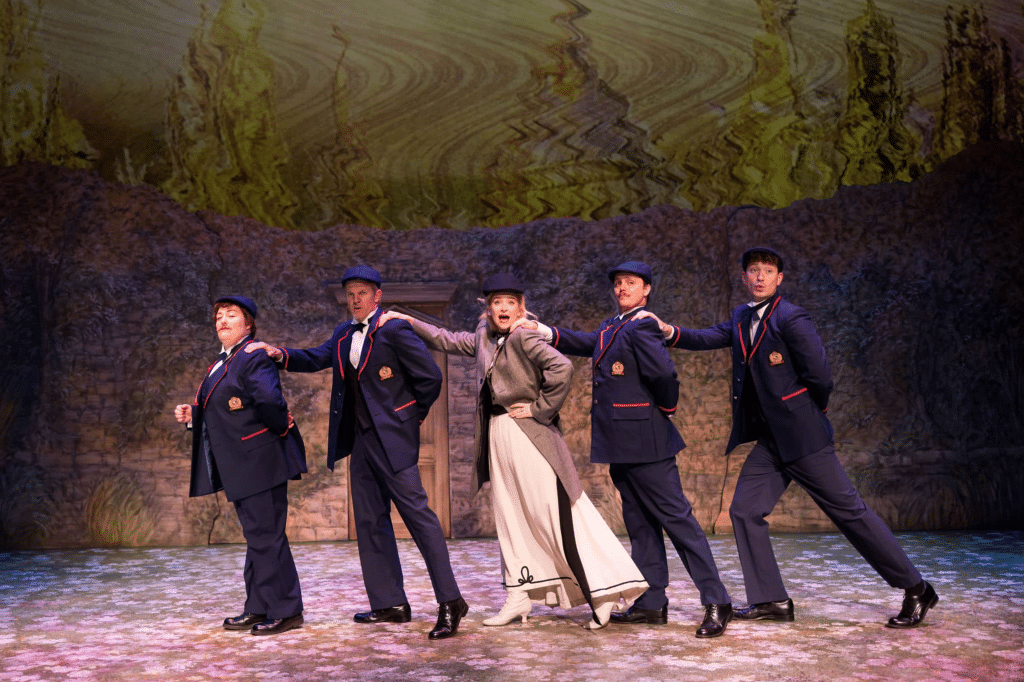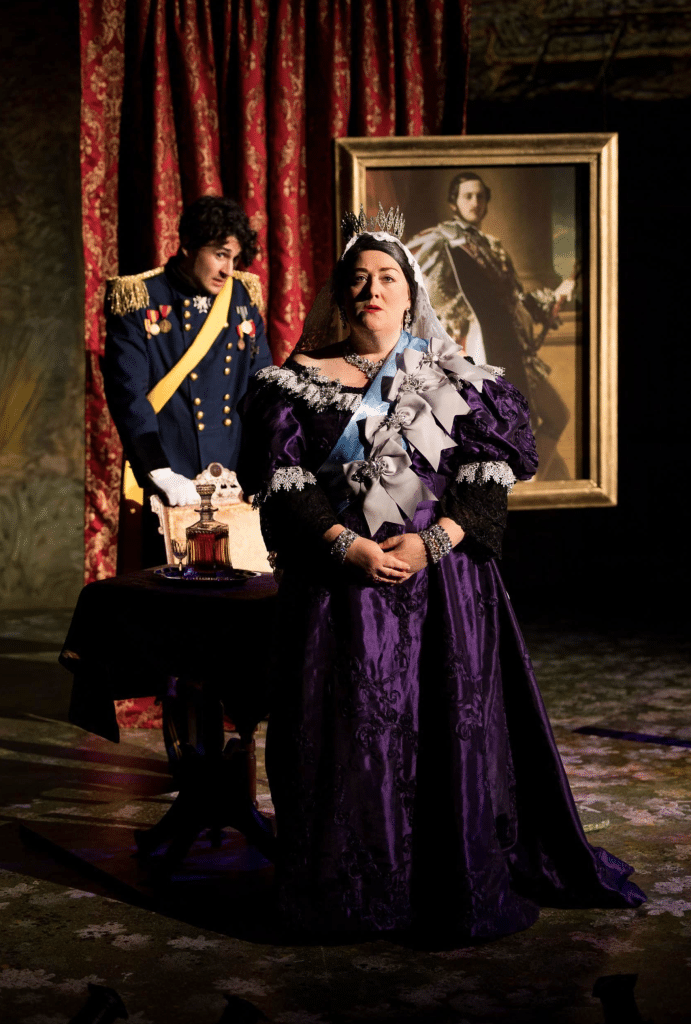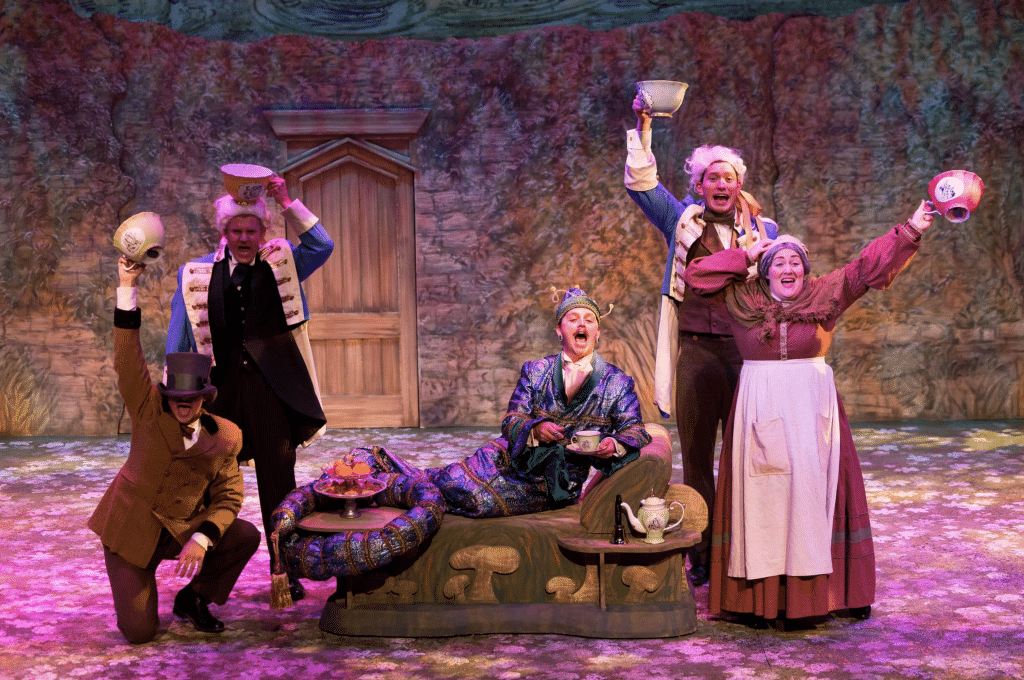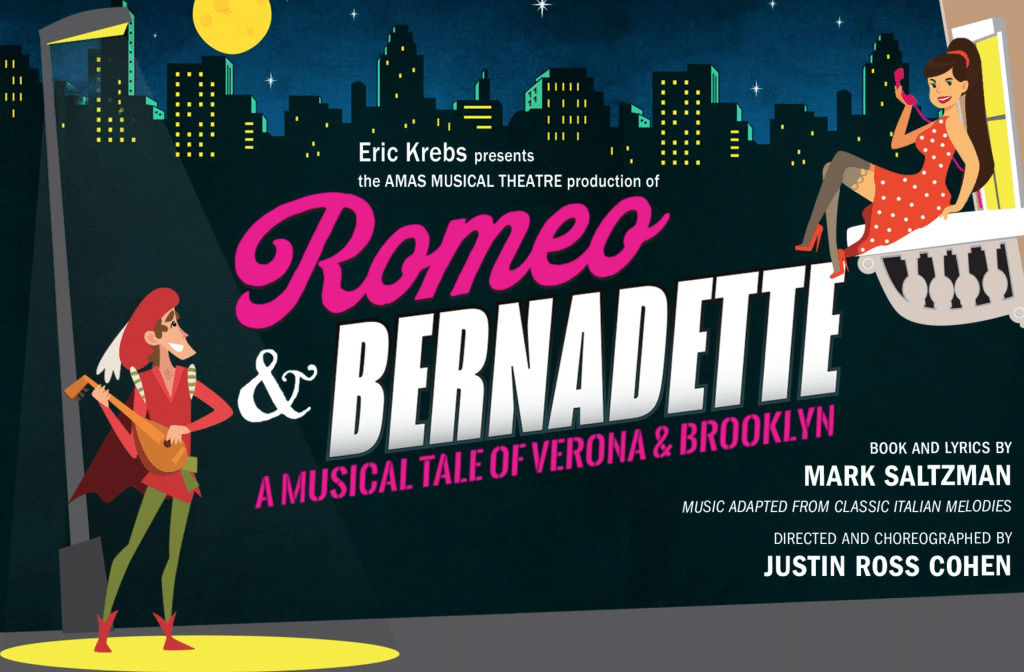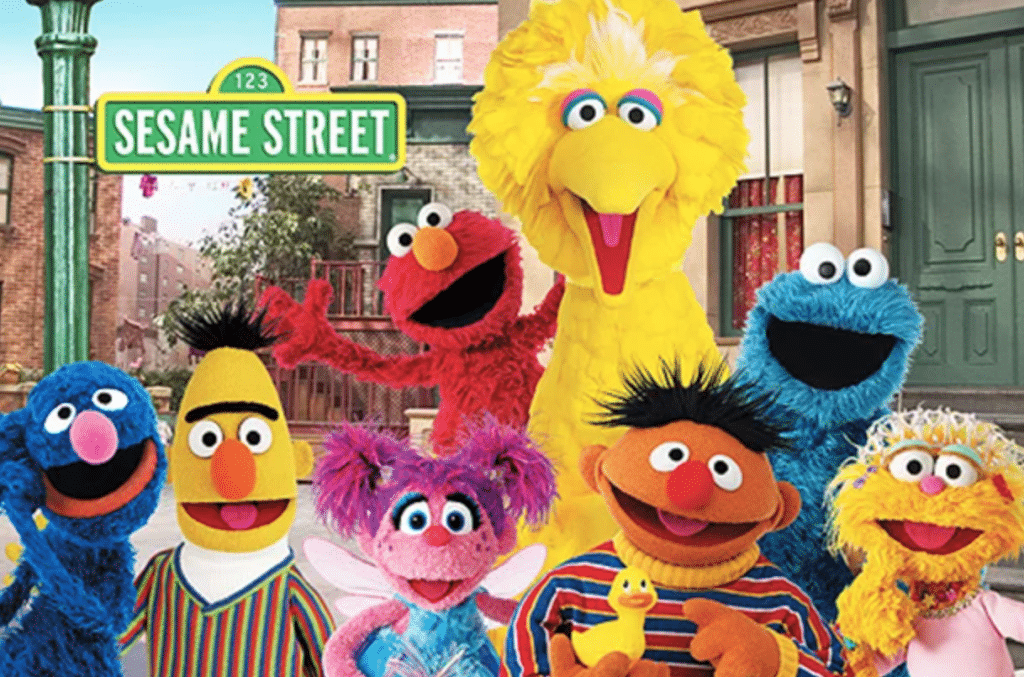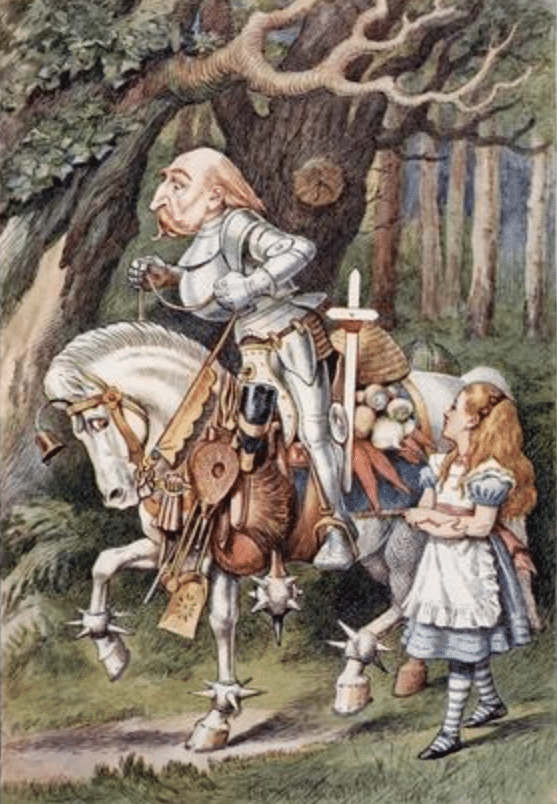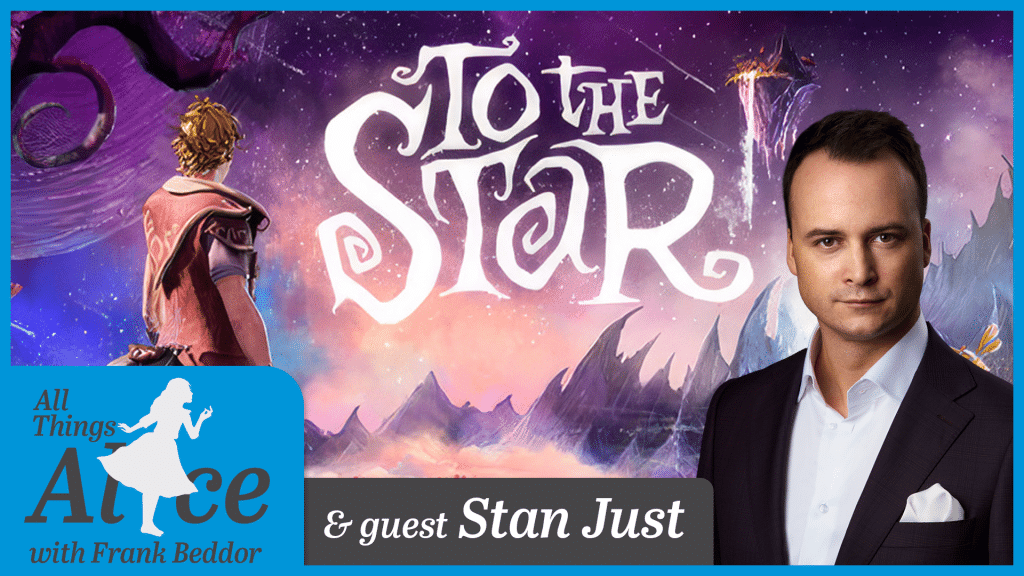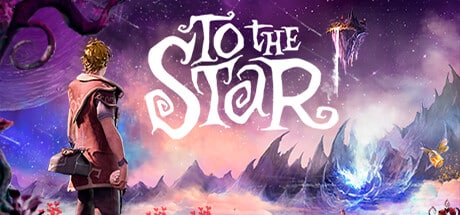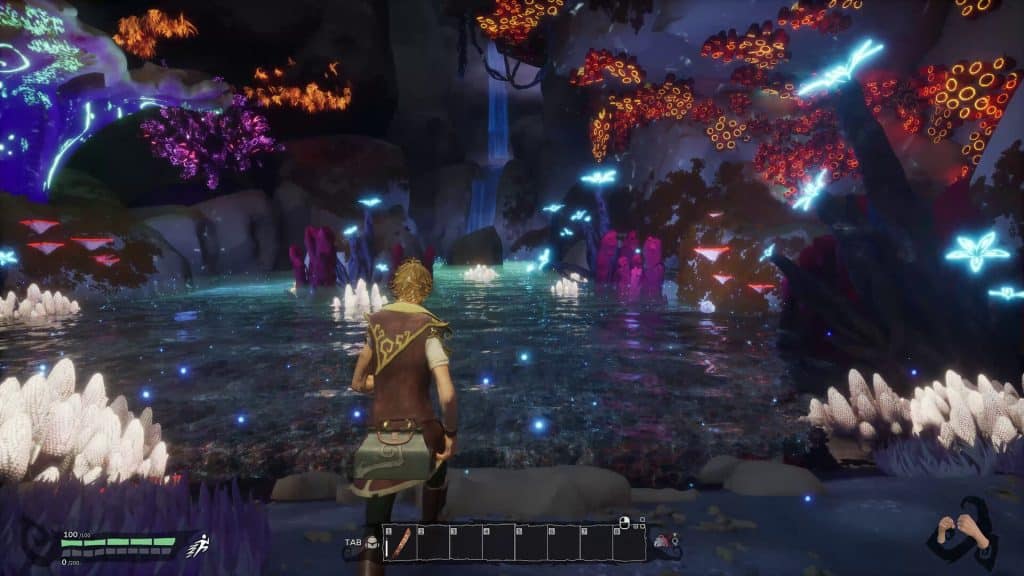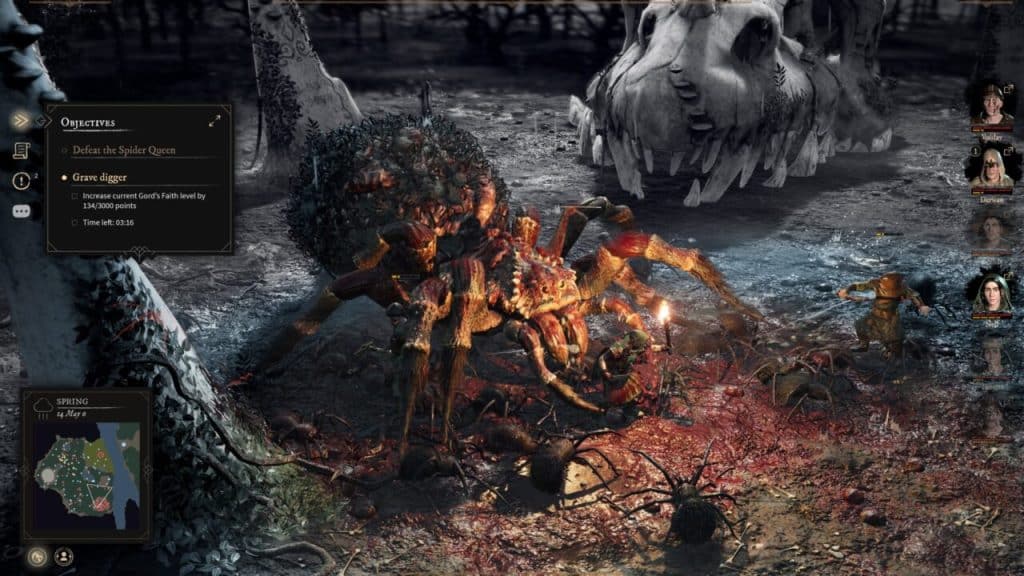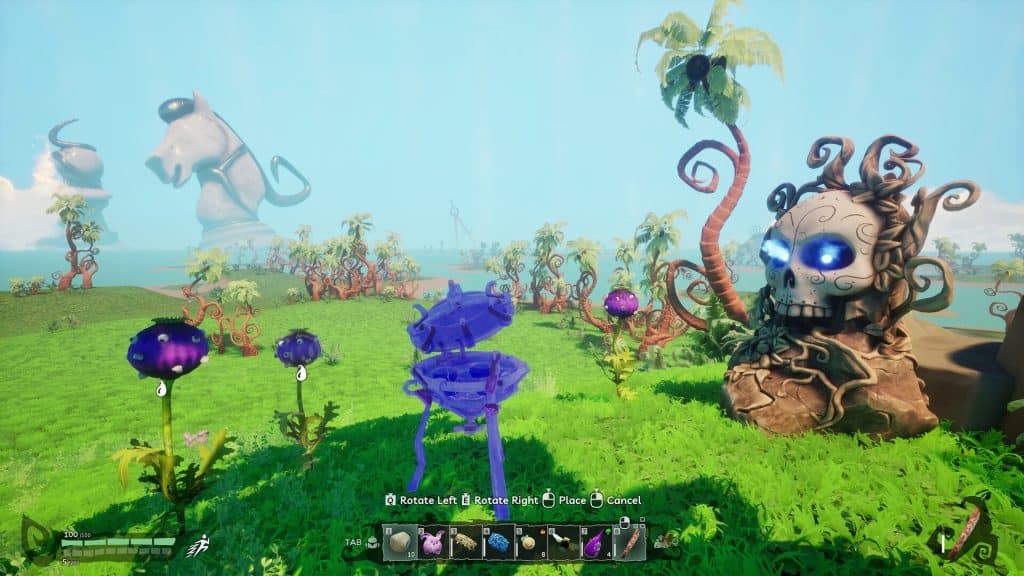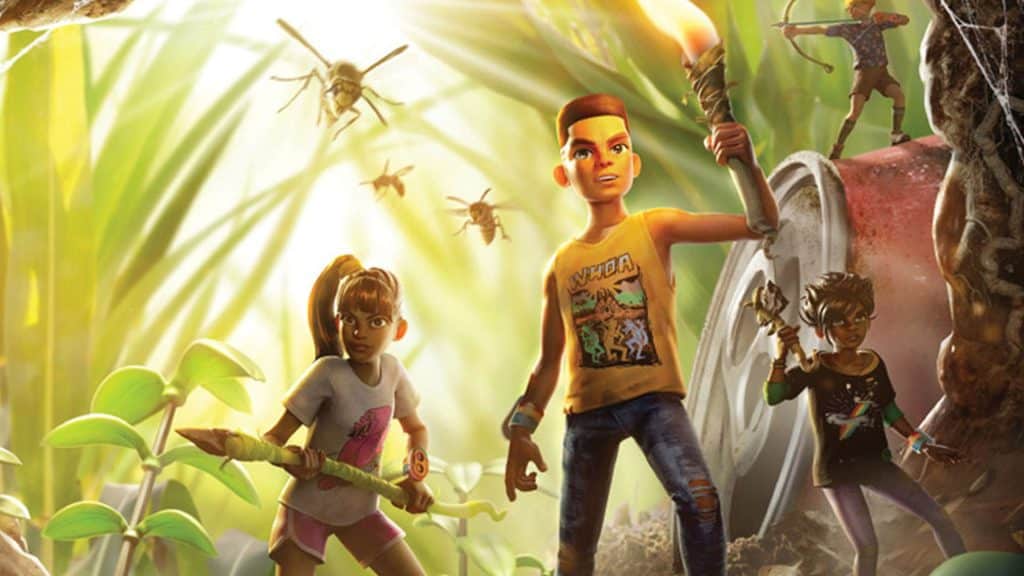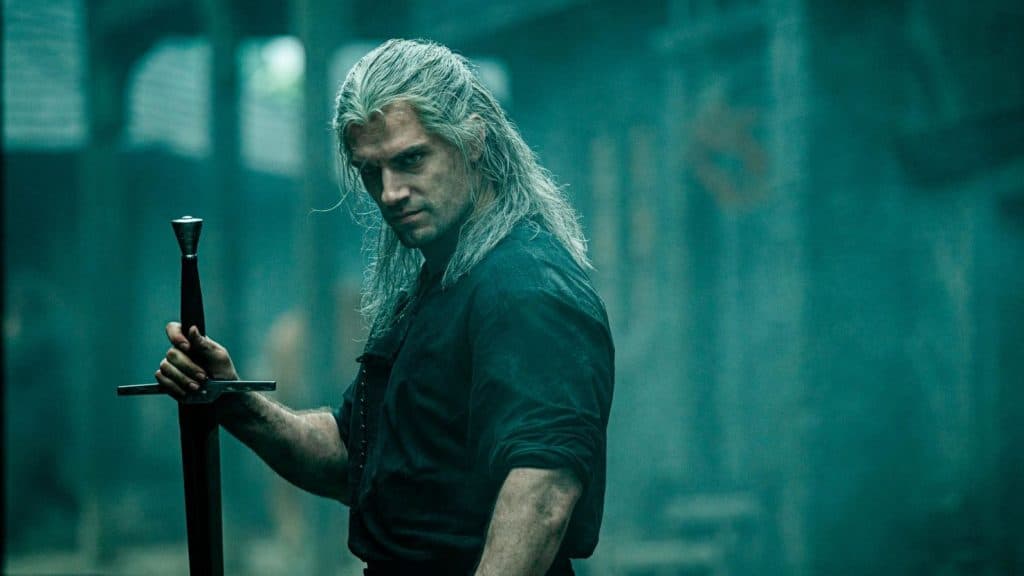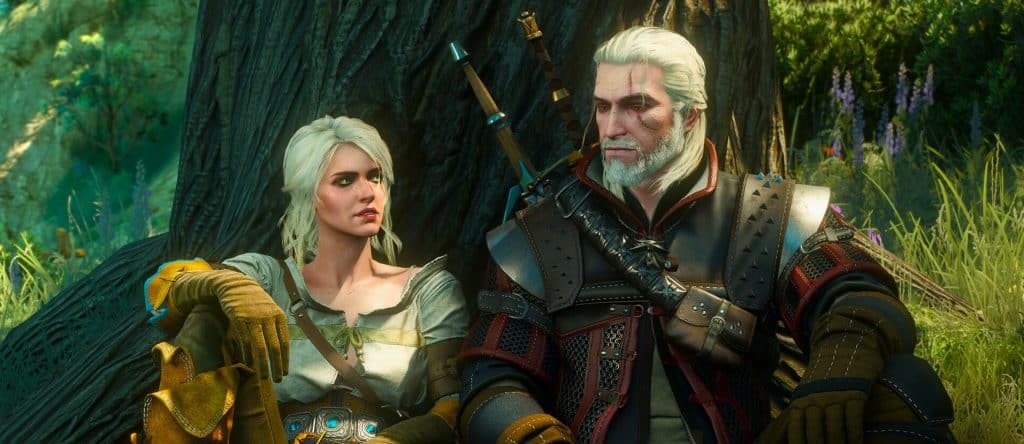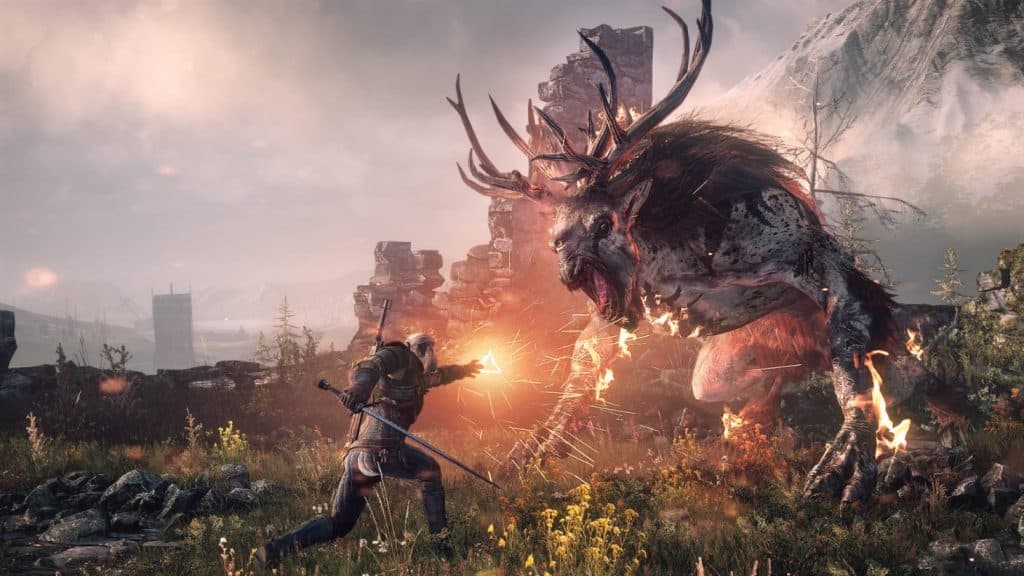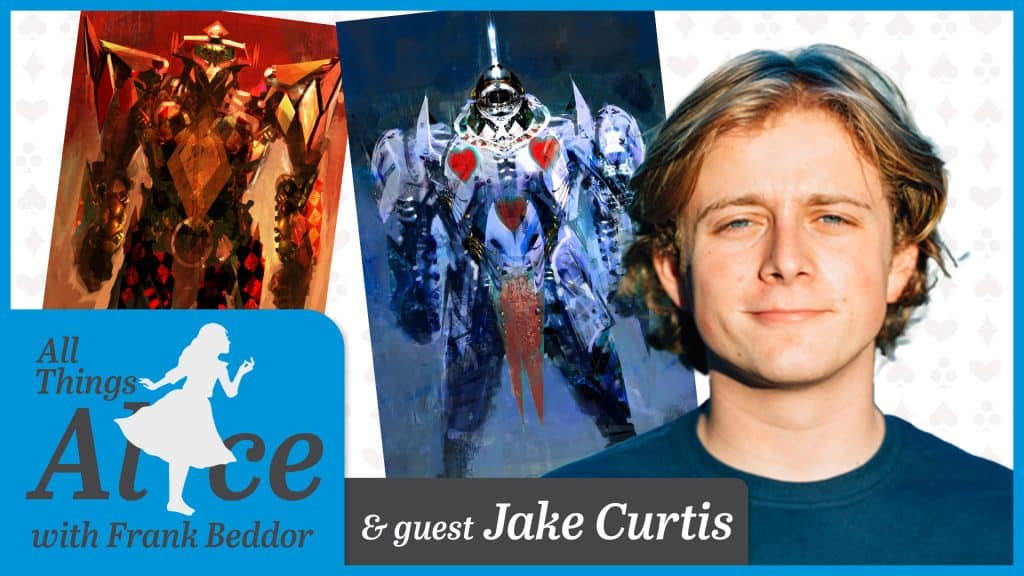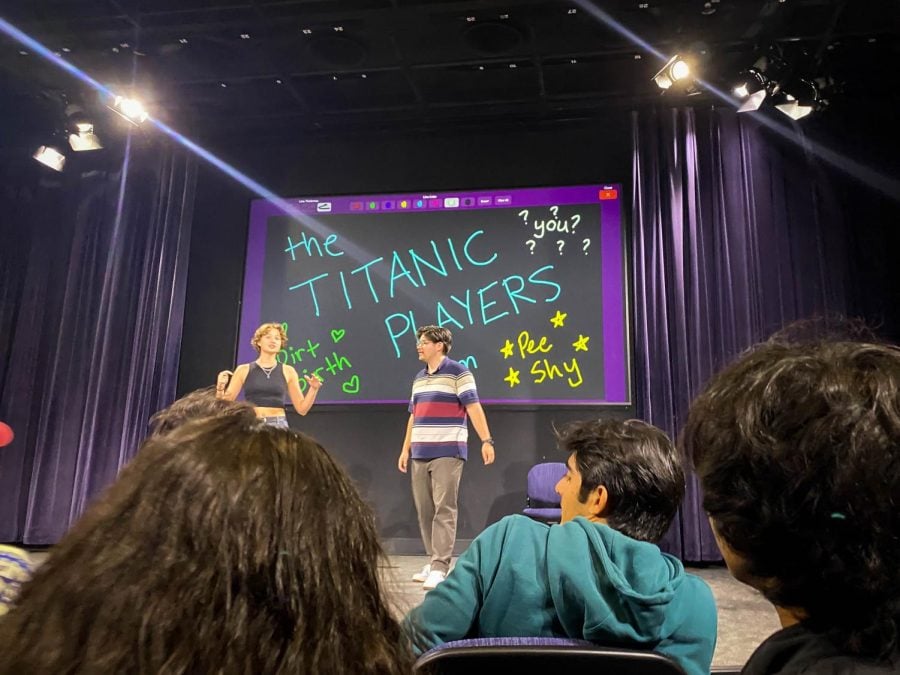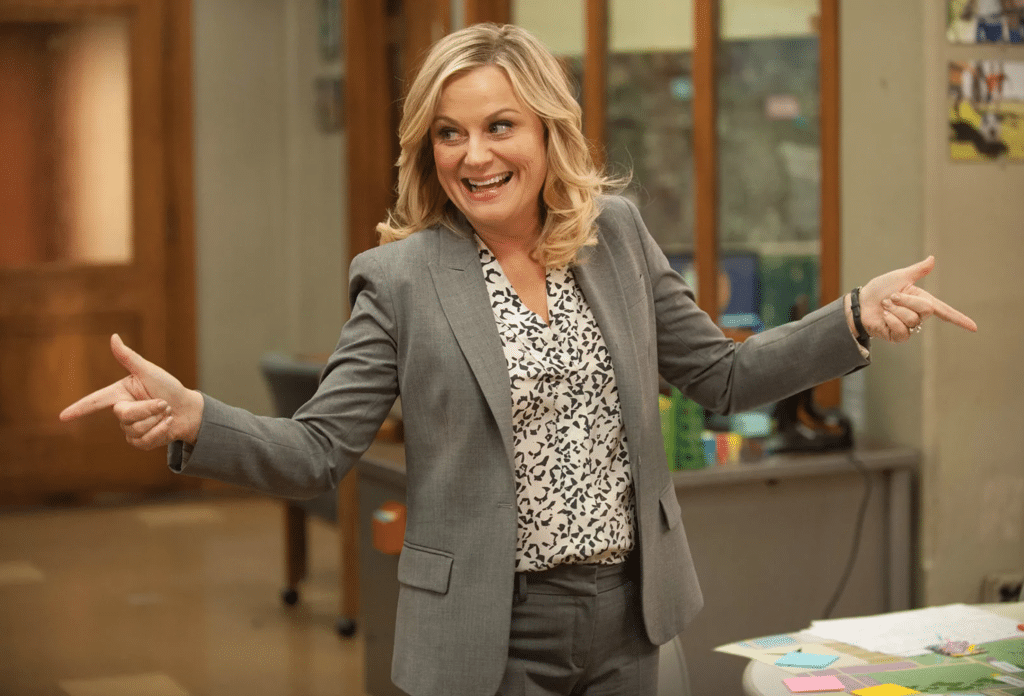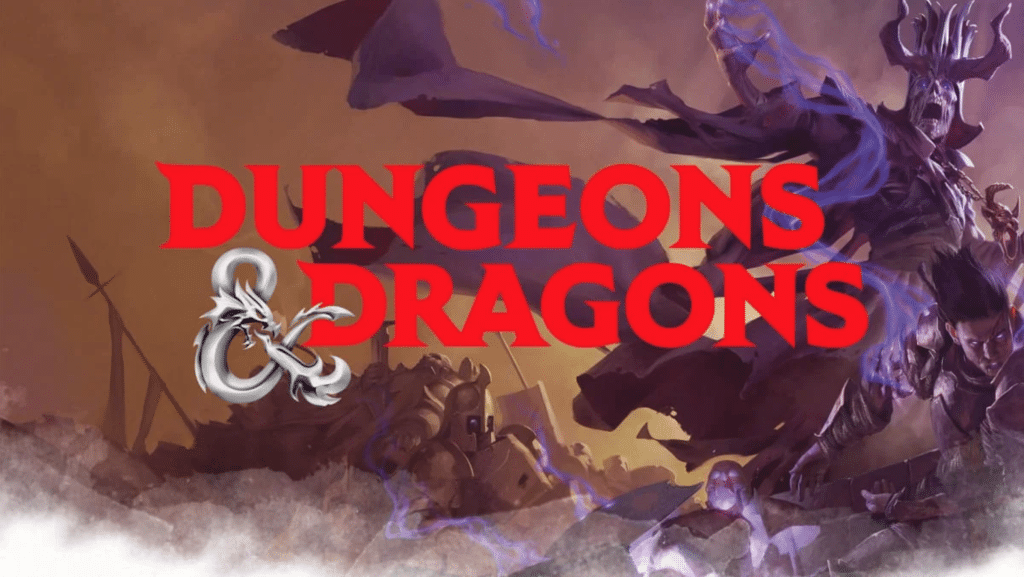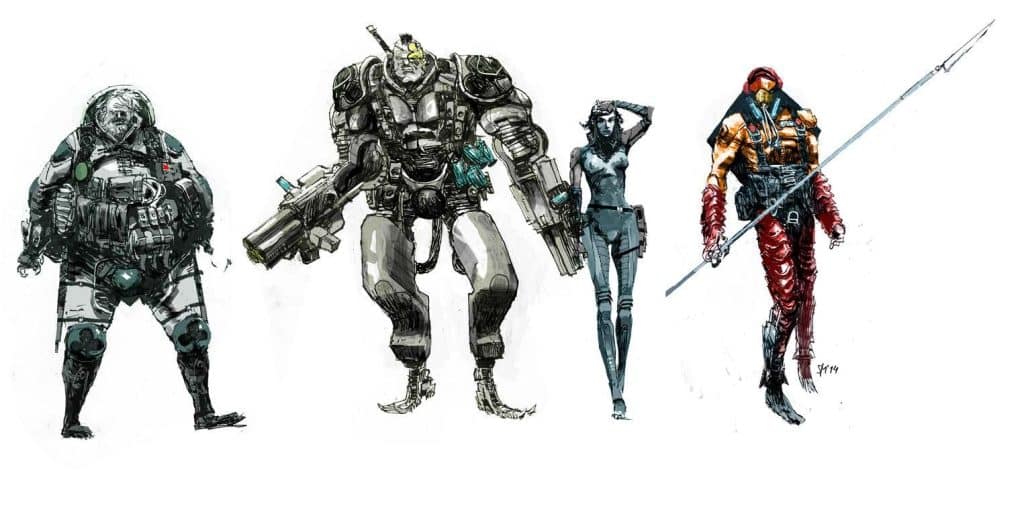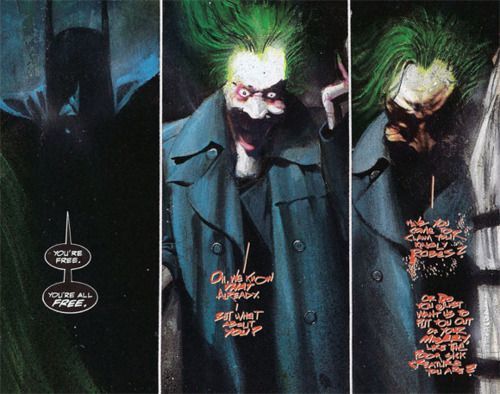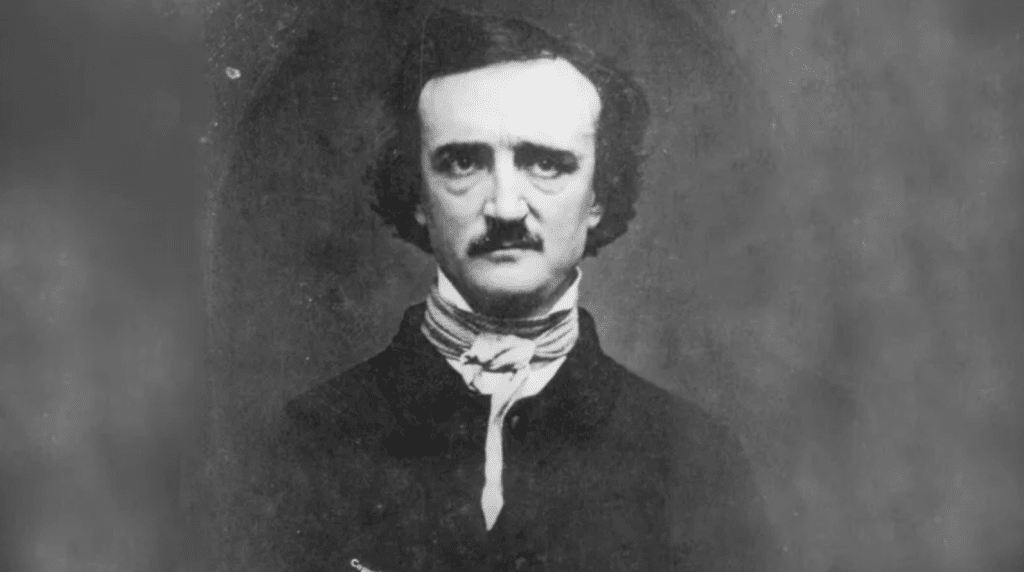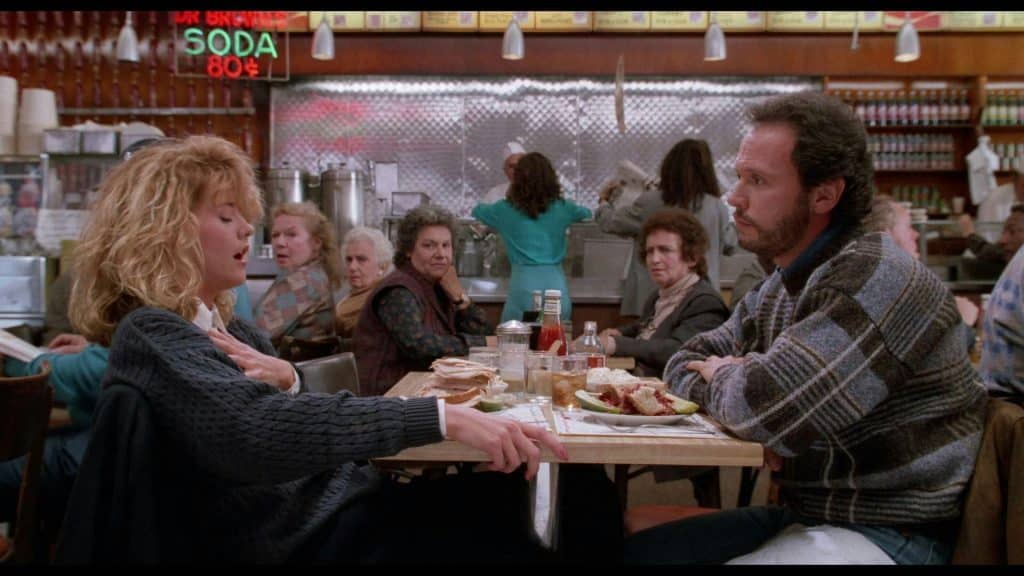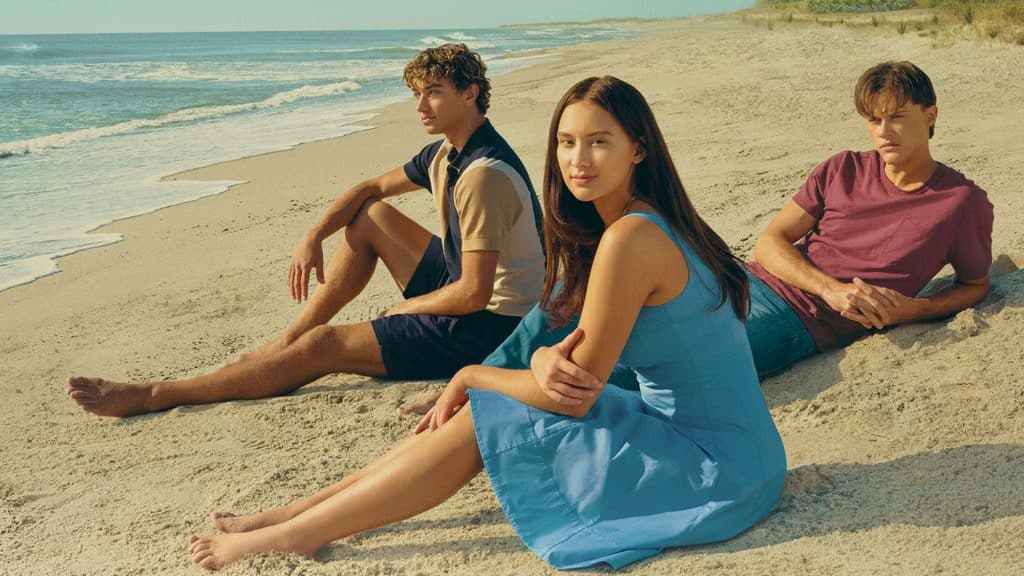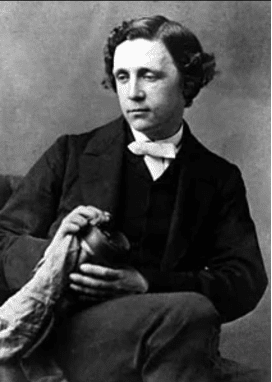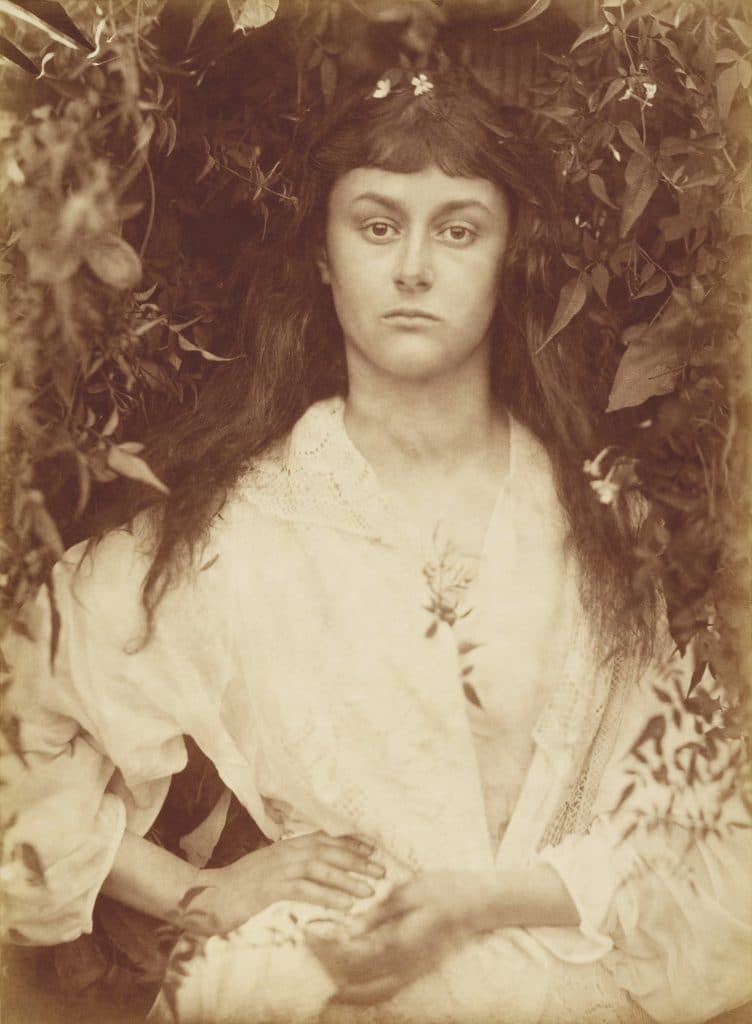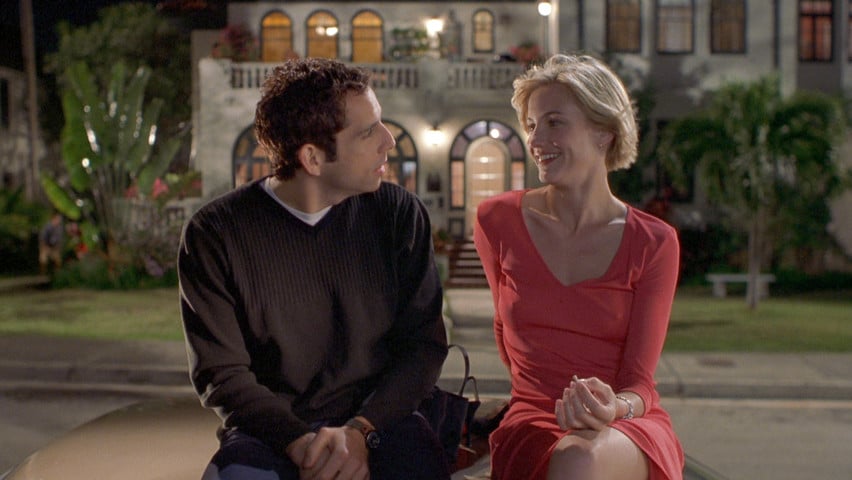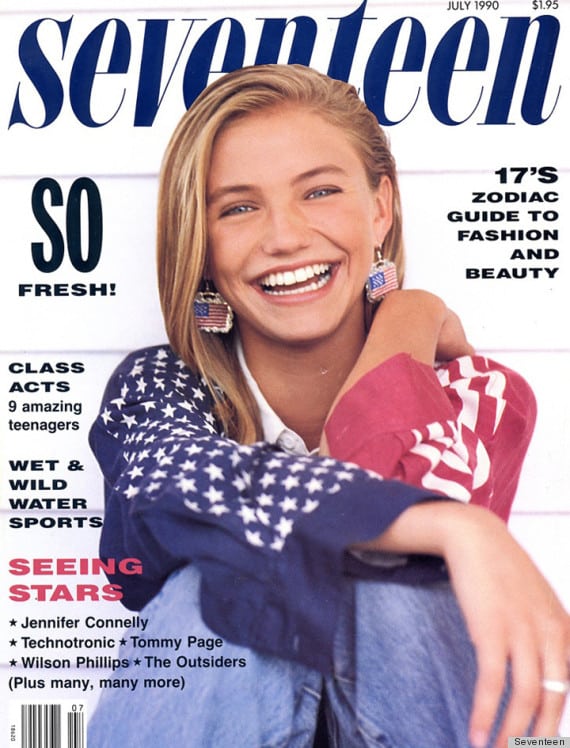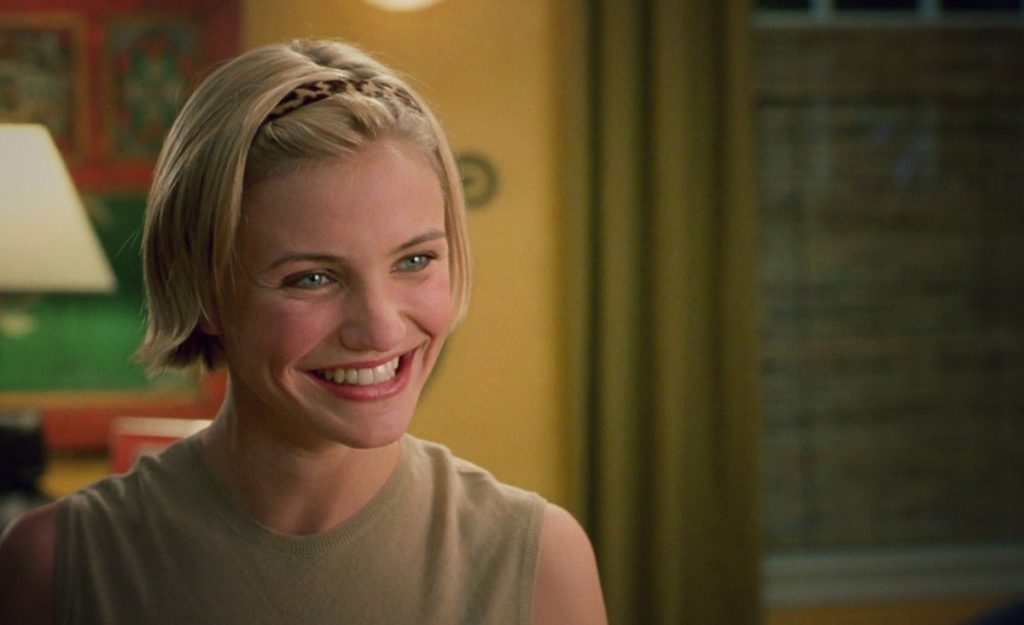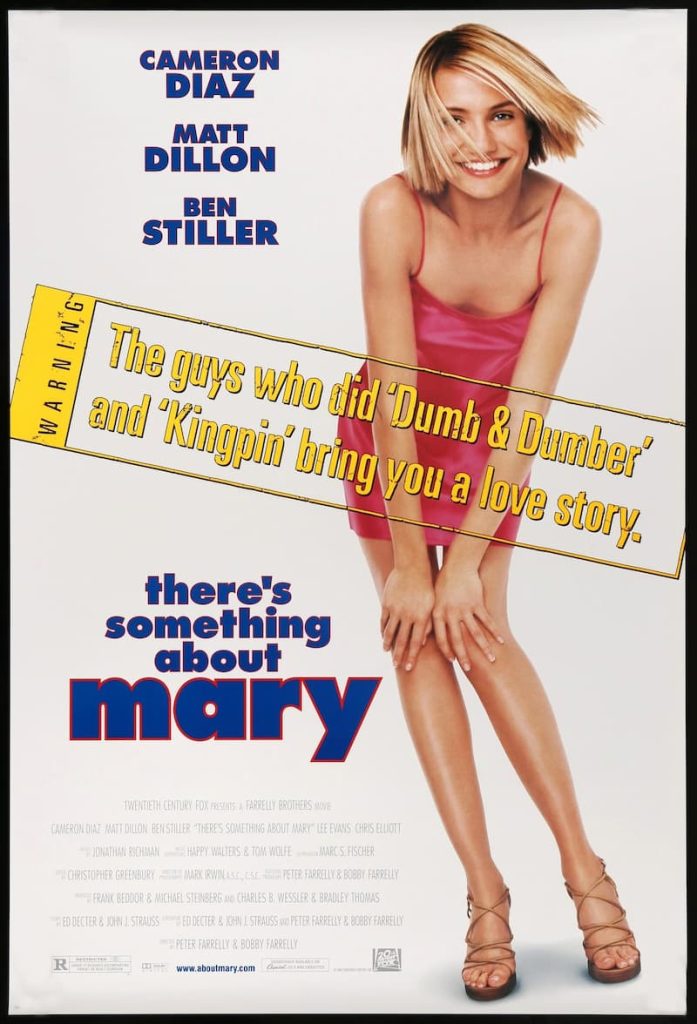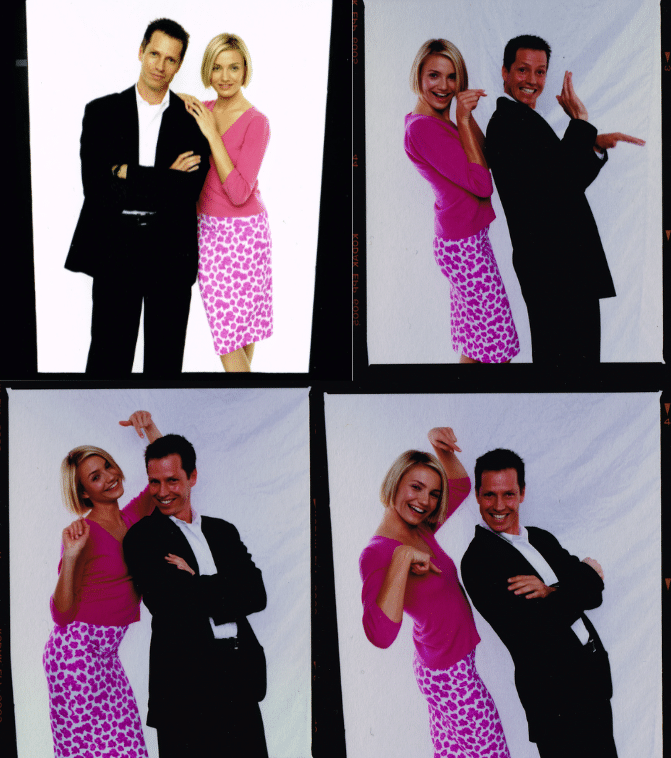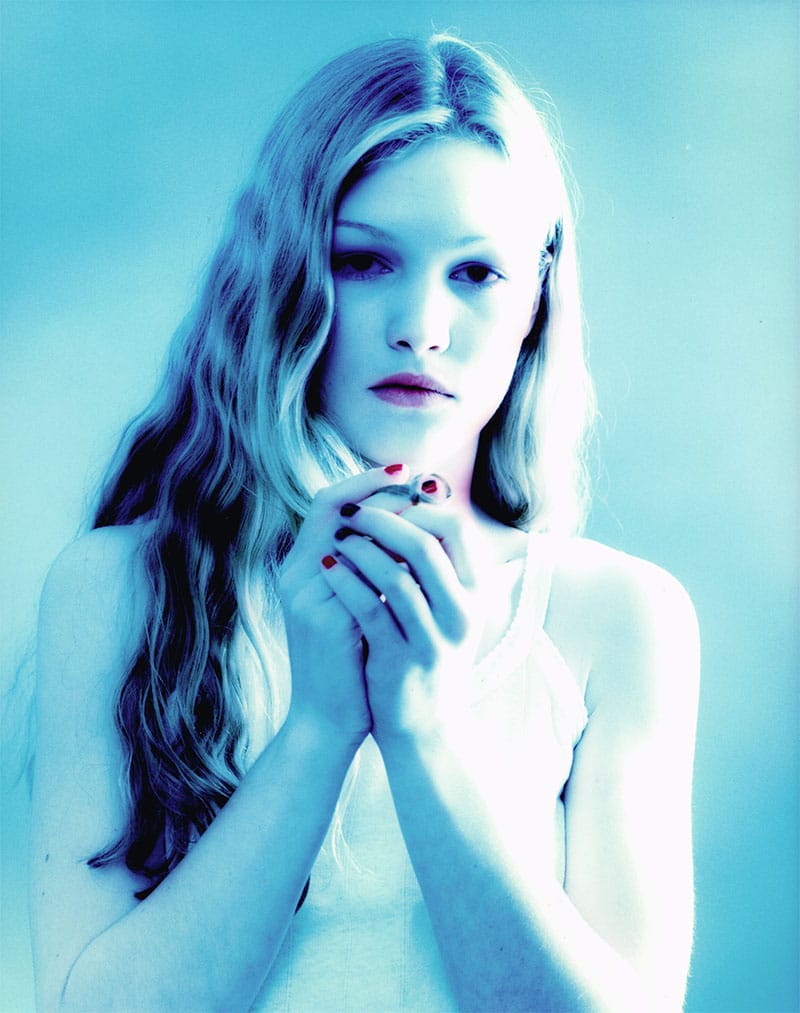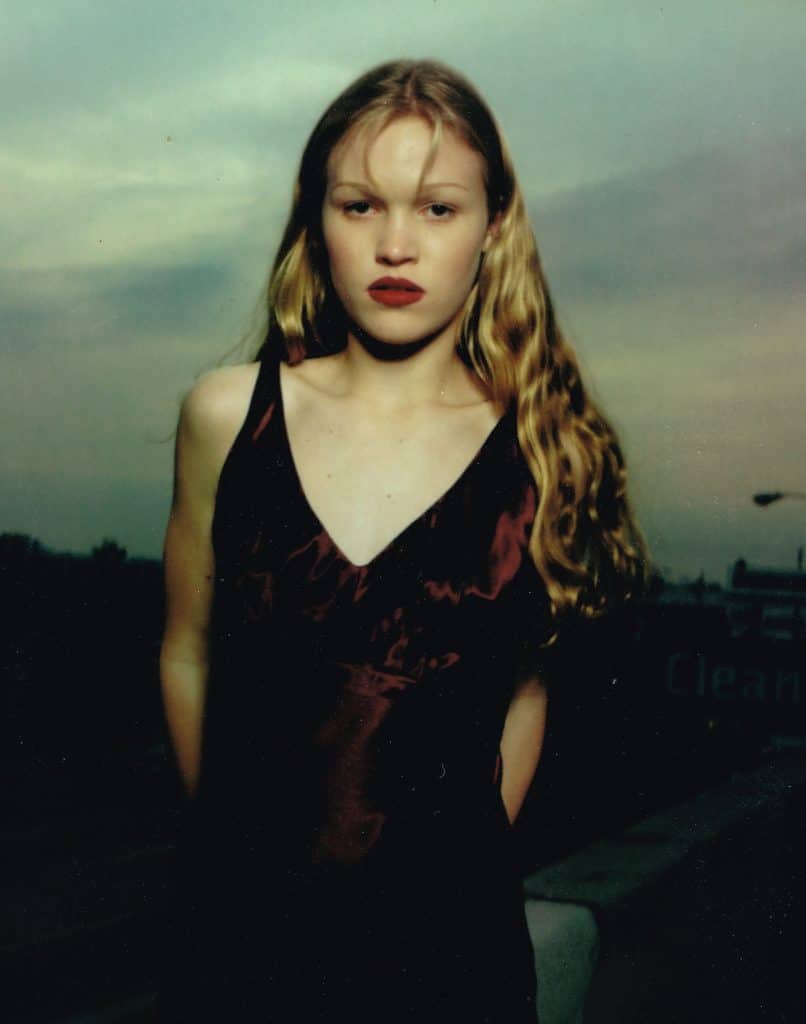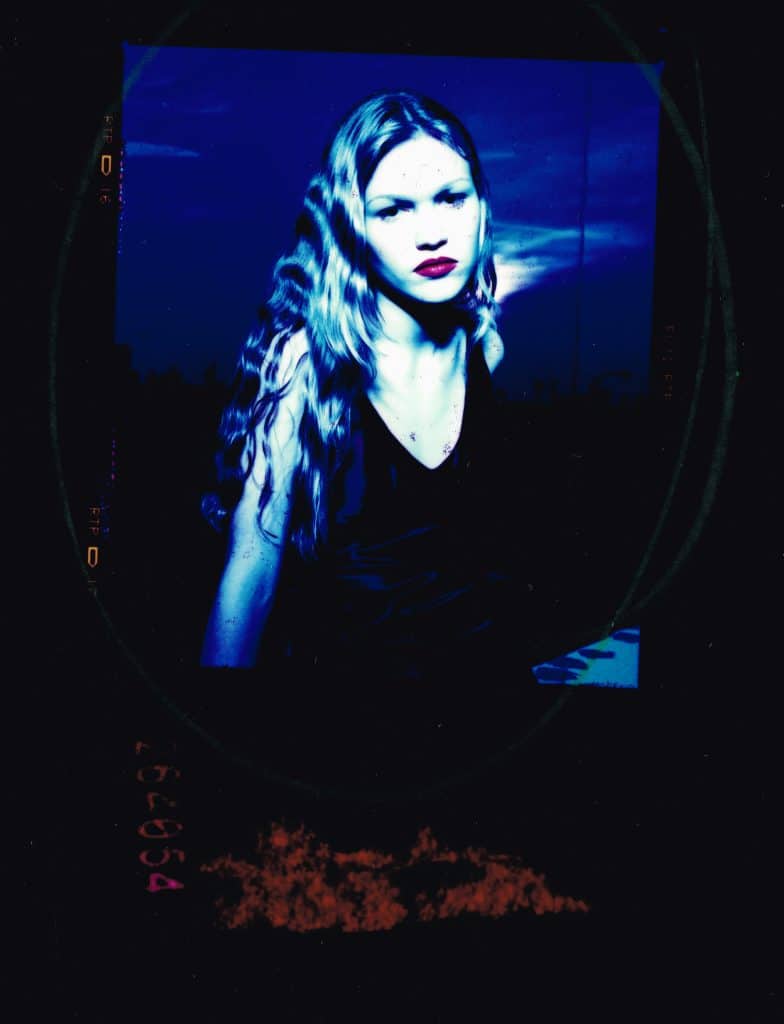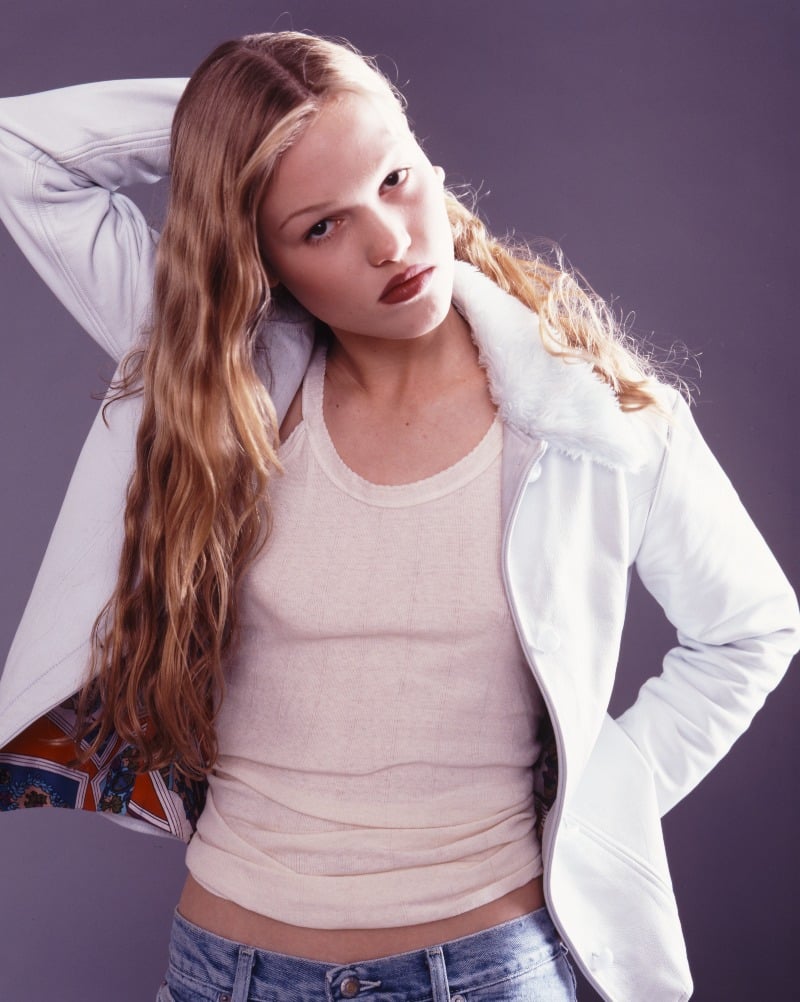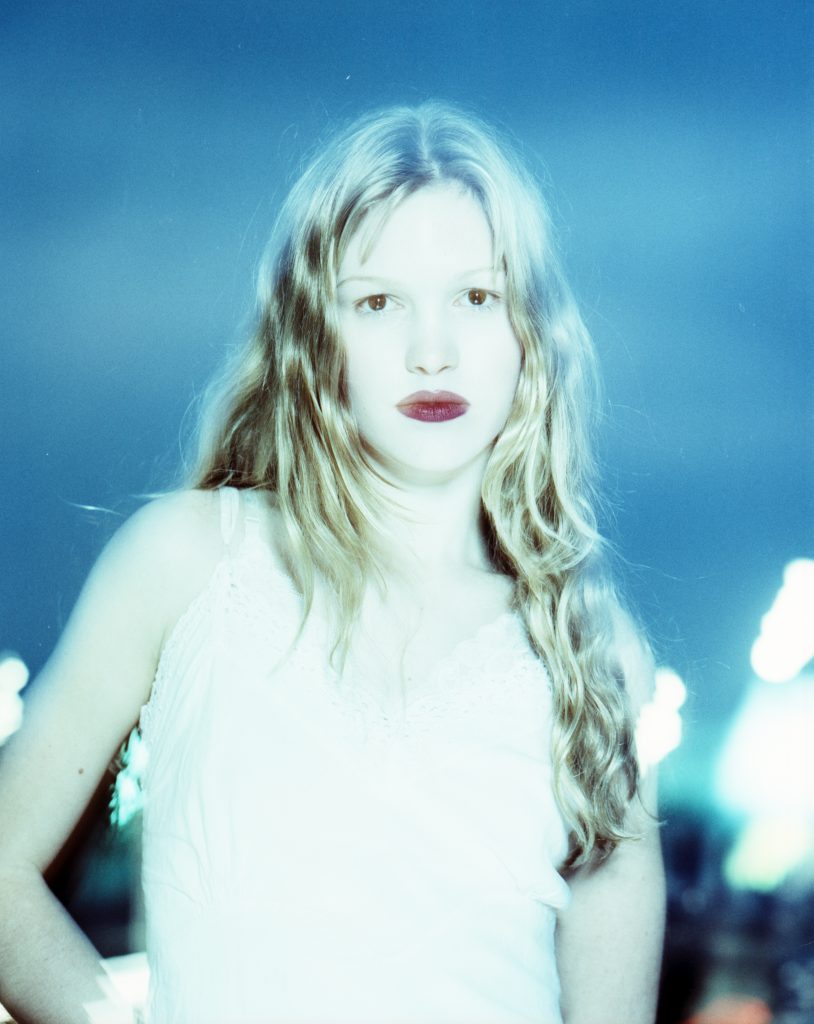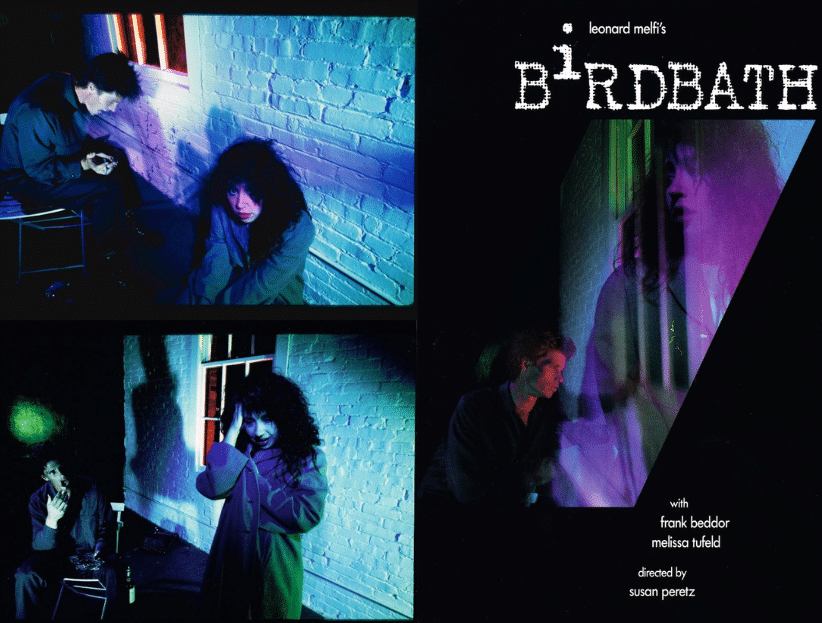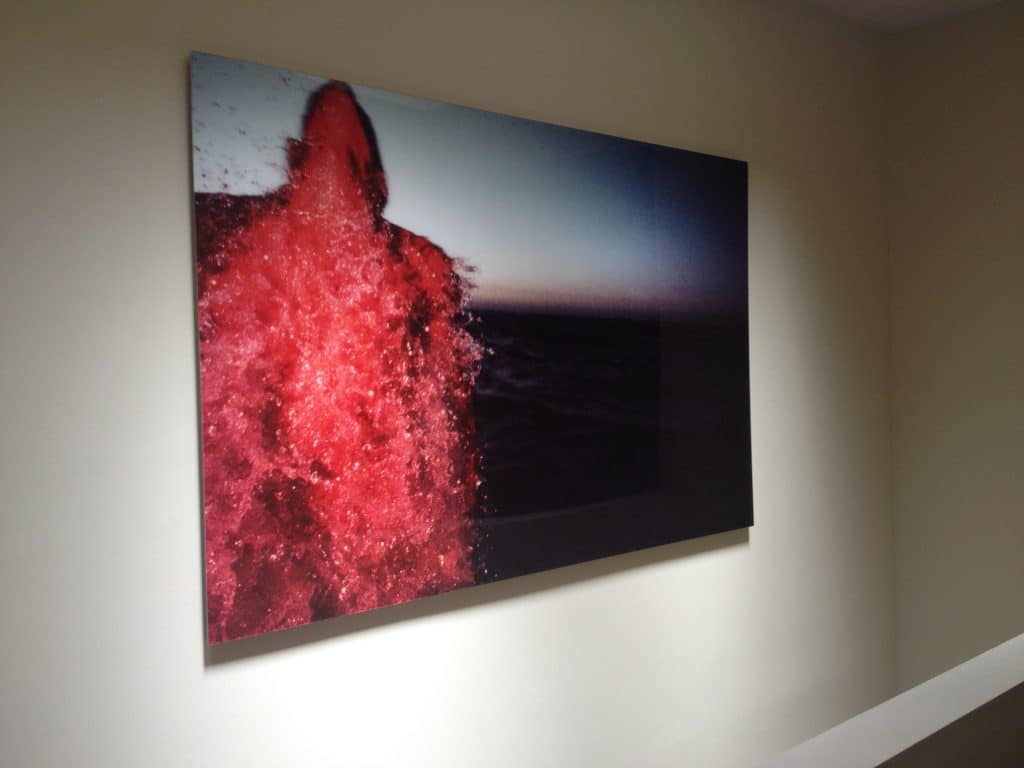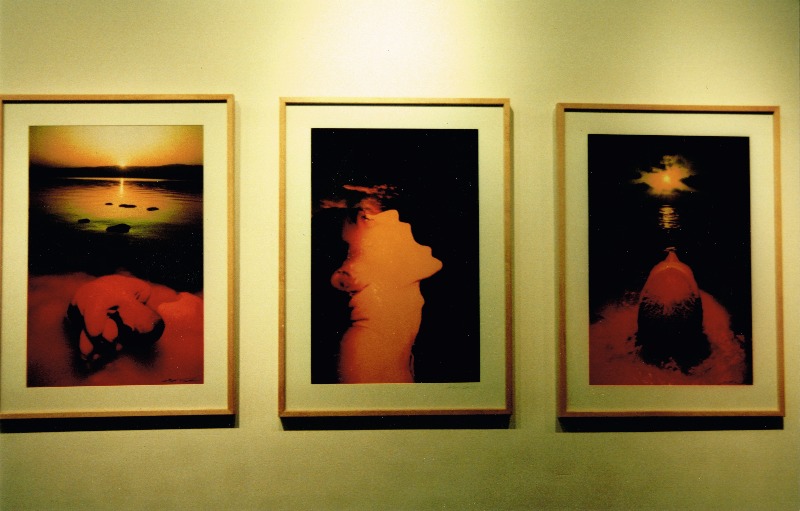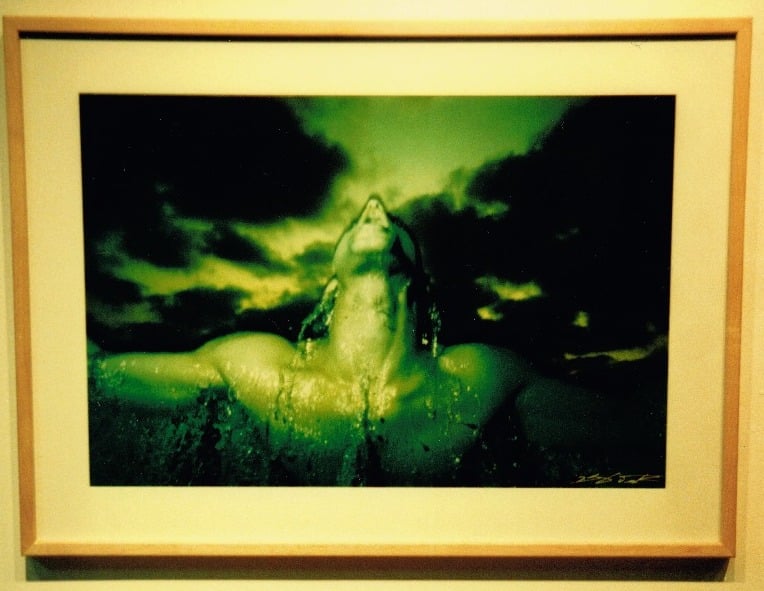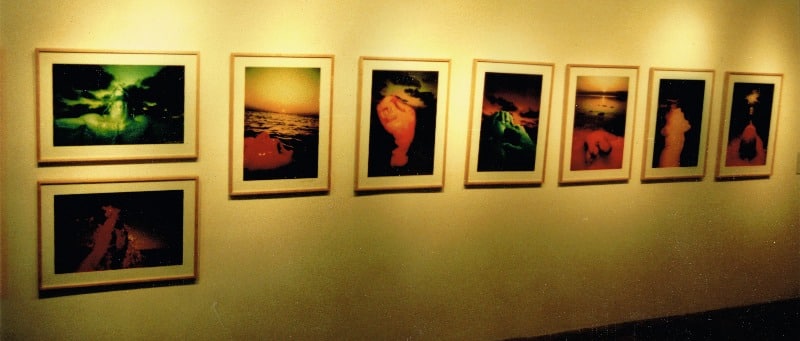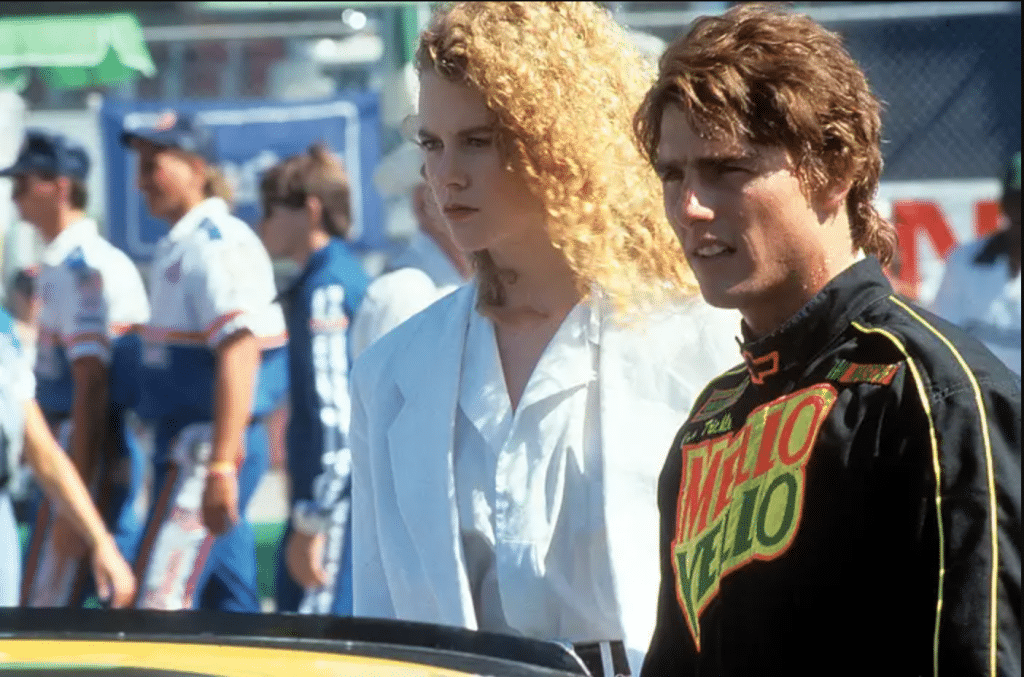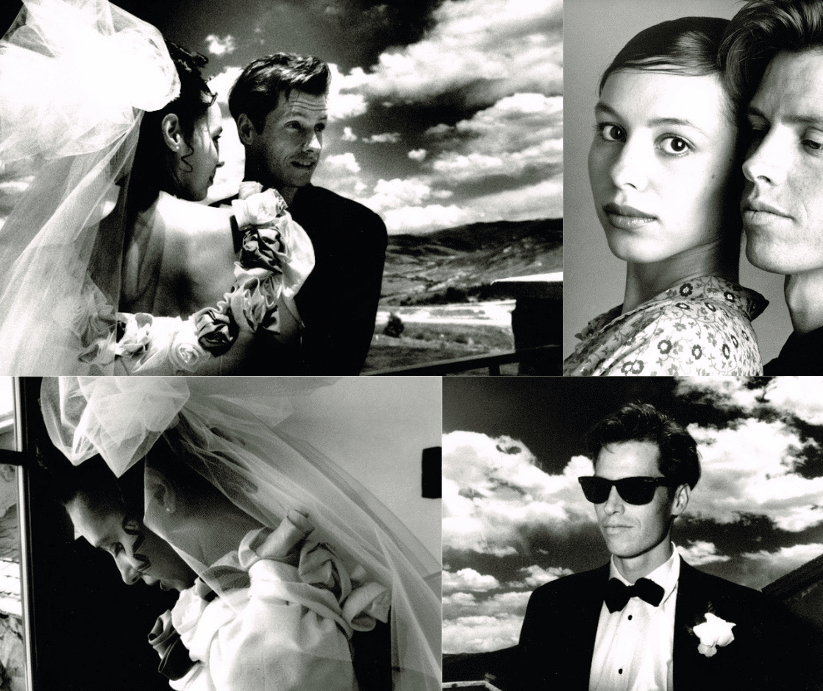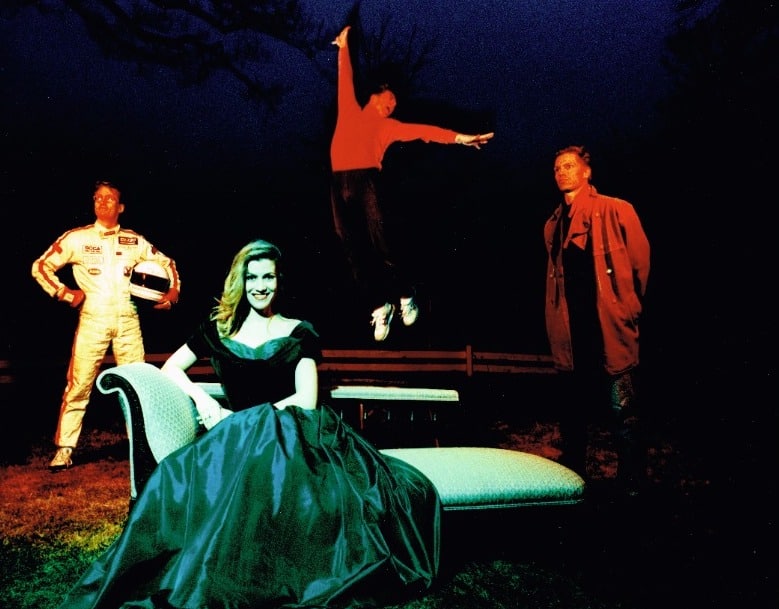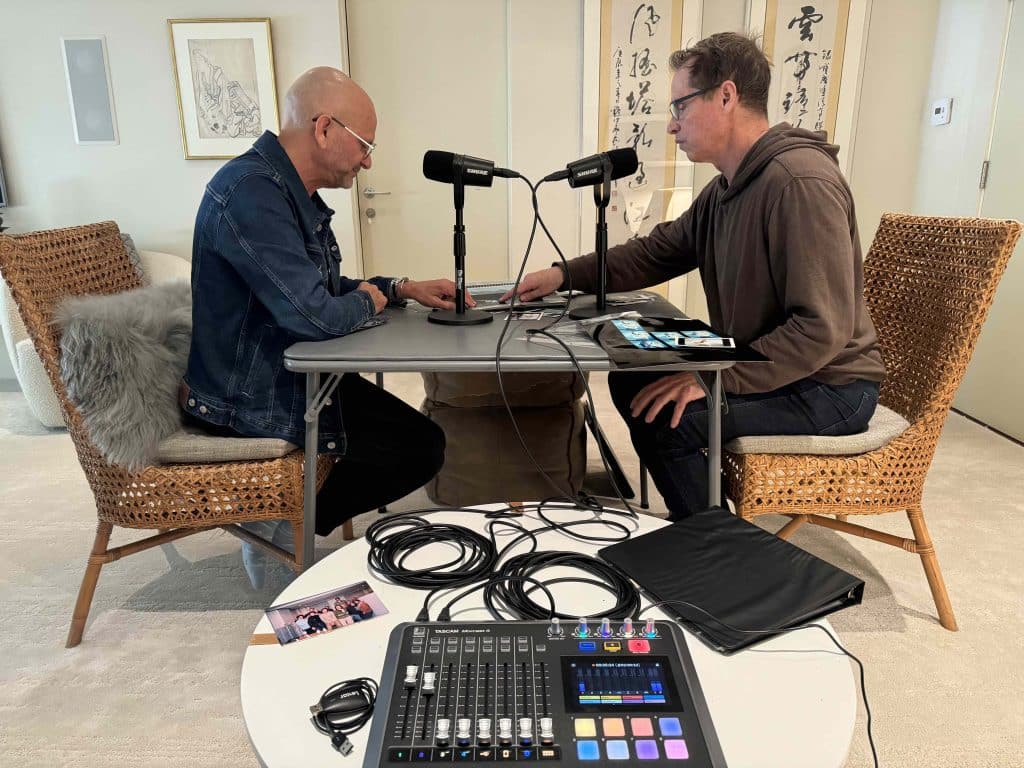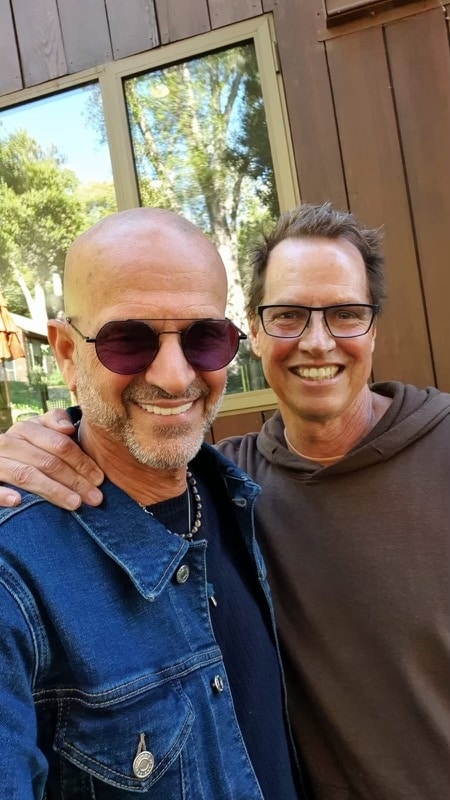All Things Alice: "Escaping Wonderland" Interview
As an amateur scholar and die-hard enthusiast of everything to do with Alice in Wonderland, I have launched a podcast that takes on Alice’s everlasting influence on pop culture. As an author who draws on Lewis Carroll’s iconic masterpiece for my Looking Glass Wars universe, I’m well acquainted with the process of dipping into Wonderland for inspiration.
The journey has brought me into contact with a fantastic community of artists and creators from all walks of life—and this podcast will be the platform where we come together to answer the fascinating question: “What is it about Alice?”
For this episode, it was my great pleasure to have Escaping Wonderland producer Pelle Hallert and writer Mårten Gisby from Cortopia Studios join me as my guests! Read on to explore our conversation, and check out the whole series on your favorite podcasting platform to listen to the full interview.
Frank Beddor
Pelle Hallert and Mårten Gisby, welcome to All Things Alice. I’m excited to have you guys on the show. If you wouldn’t mind quickly introducing yourselves and what you do at your company, then we'll jump in.
Pelle Hallert
Good to meet you, Frank; thanks for having us. I work in Sweden at a company called Cortopia Studios. We make virtual reality games and created an Alice in Wonderland fantasy called Escaping Wonderland. I have a background in films. I started out as a director of photography and directed a lot of commercials. Then, I moved over to computer games in 2016. I started making cinematics at Dice. I made all the cinematics for Battlefield. So I started doing that, and then I transitioned into producing and got into VR.
When I started at Cortopia, they had a former Alice game called Down the Rabbit Hole, which they created in this beautiful VR diorama setting with all of Wonderland coming to life. It was absolutely stunning. I was part of creating the sequel, Escaping Wonderland, together with Morton here, who is the lead writer. It was really one of those joyful experiences of taking our version of the IP and seeing how we could explore that further and have our own interpretation and meaning.
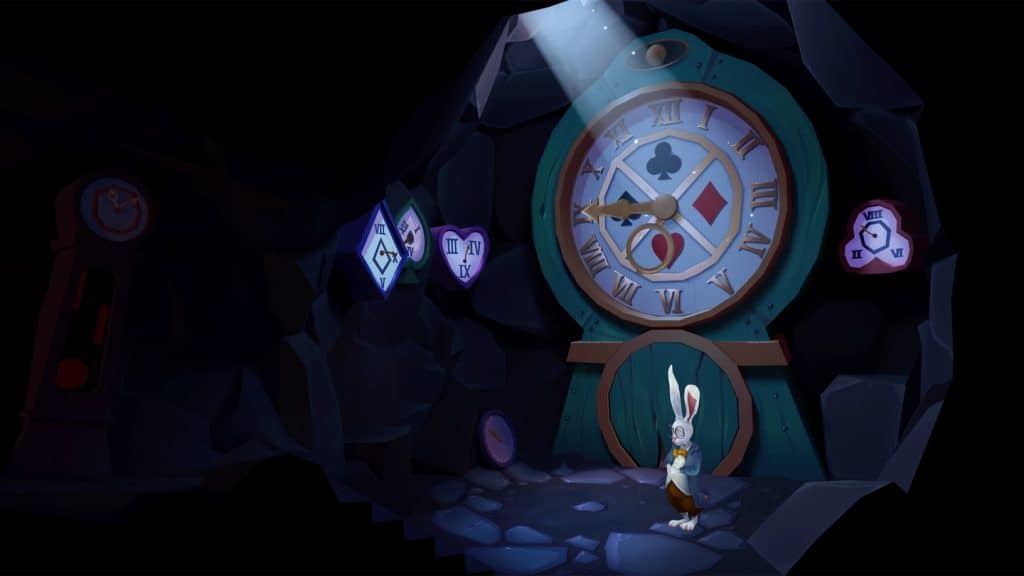
FB
I'm excited to drill down on the way you approach that. Mårten, how did you get your start? You started a poetry society, right?
Mårten Gisby
It was a long time ago. That was during my hipster days when I was living off noodles and falafels and just doing whatever I could. But yeah, I did start a poetry collective once, and I use it in my bio, I think, to sound cultured and pretentious, as Pelle would say. But I mostly worked in film, actually, for many years. I wrote a couple of books, and then two years ago, I got roped into Cortopia by Pelle to work on Escaping Wonderland. They had the foundation set, and I had the joy and privilege of writing scripts and directing the performers. This was one of the best projects I've ever worked on, so I'm really happy to be here to talk about it.
FB
Thanks, guys, for joining me. It sounds like we have very similar backgrounds. I was a film producer, started writing novels, and was interested in gameplay. I'm interested in all creativity, but particularly with this one IP, Alice in Wonderland, in which you guys are doing games and writing in this space, and I've been writing in this space for 20 years.
Why don't we start from the beginning? I'll tell you a quick little story about how I came to Alice. My grandmother's name was Alice, and Alice in Wonderland was my mother's favorite book. So when I was 10 years old, I was really forced to read the book. They thought I would really enjoy it, but I hated it. Years later, I got my sweet revenge by writing The Looking Glass Wars. I wrote a book that I thought my 10-year-old self would enjoy. My favorite introduction to Alice in pop culture was Jefferson Airplane’s “White Rabbit.” Of course, The Matrix was another in terms of the movie side of it. Those were my influences and early introductions.
Pelle, do you have an early introduction? Why did you choose Wonderland instead of Oz, Neverland, or any other piece of pop culture?
PH
The original choice of Alice in Wonderland was prior to my days at Cortopia, but since we started exploring it, the team fell in love with the IP very much. So when I came here and started discussing it, they were so intrigued and had such a huge knowledge of the IP. I knew some of the IP because we read the book in school when I went to an English school in Tanzania, but it didn't make an impression on me. To me, it came to life through Tim Burton. It really tried to expand on what Wonderland could be and how they could speak and whatnot. So when I came aboard the project, I basically had that vision, Tim Burton’s Wonderland, in my mind. But then you explore it, like you've done, and it's like, “Wow, what is this space?” There are all of these interpretations and we really tried to dig down into what it could mean to us.
I think Mårten really did a wonderful job of interpreting the humor in the novel and moving that into the game, which is a huge part of the experience. But we also lean into the heavy topic of depression. We're touching on it but doing it on such a scale that you get to laugh at it without discarding the seriosity of the subject. To Mårten's credit, he did a wonderful job in the writing and brings so much to this game.
FB
The theme of mental health and madness is not heavy-handed at all. You have all the levity of the comedic elements. Mårten, when you were first introduced to the work, did you interpret it as whimsical or nightmarish? You have sort of a mix in Escaping Wonderland. The trailer has a very funny moment when the Dormouse is exercising with the little trap. So tell me a little bit about your introduction and your interpretation of Alice and how you took that into writing this game.
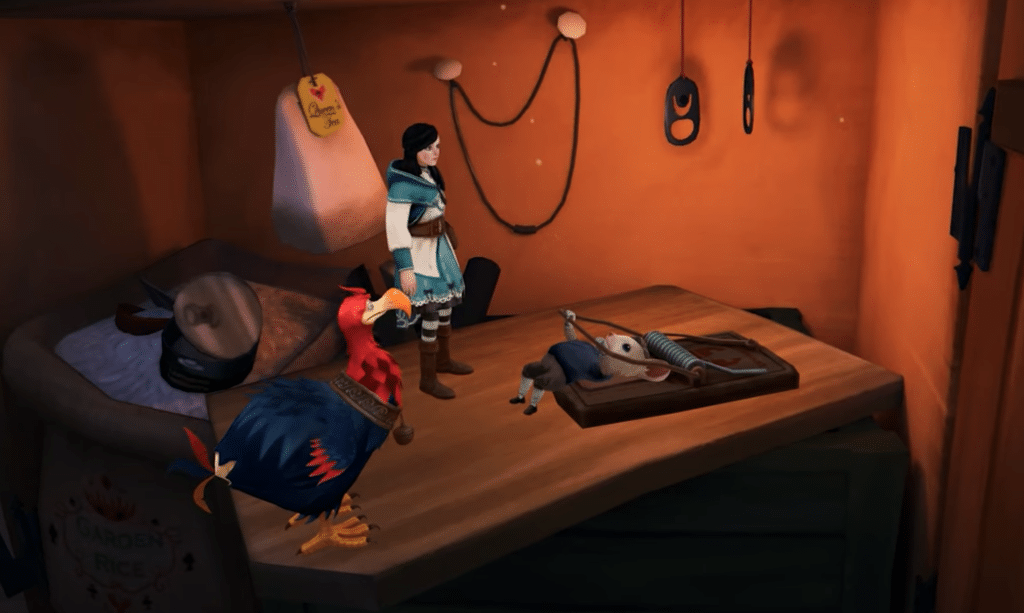
MG
We've definitely done a mix because we had the legacy of the first game that was more aimed toward family and children and had the whimsy and magic of Wonderland. We wanted to keep that with us. That’s true to Alice in Wonderland, but we wanted to add more psychedelic, surreal, and psychological elements as well as dark and nightmarish themes. What I really love, and what I tried to keep a lot of in the game, is this nonsensical wordplay that turns into world-building. There are a lot of examples in Alice in Wonderland where they play with the language and make that true in this world in a way that becomes allegorical. For example, at the beginning of the game, she literally falls down and hits rock bottom. That’s a metaphor for her psyche hitting rock bottom, and she has to work herself up from where she's fallen, using that kind of humor and allegory.
FB
You chose to create a new lead character for the game named Molly. That's funny because I have a character, Hatter Madigan, whose daughter is named Molly. How did you approach her character, and what is her evolution of her psychologically? What space is she in before she hits rock bottom? Is there a story behind her mental state before the game? Because in Alice in Wonderland, self-identity is a big question. Which is a question for all of us through different stages - “Who am I?” Is that part of the journey for her, or was that explored in the first game?
MG
It’s one of the first questions she asks in this game. There is this gameplay mechanic where the player gets three choices in both games and in the first game, you get to choose the character's name. You can choose Alice, but you can also choose other names for the main characters. In this game, the idea I think Pele pitched to me was that we want our Wonderland to be a dream world where lots of people can end up. It's a collective dream many people might be dropping into while they sleep, whether they remember or not. It could be they're in a coma because of a car accident, or they're in a catatonic, depressed state, or it could be that it's just a story a grandfather is telling the granddaughter.
We wanted to have the second game be a completely new character in the same world with the same secondary characters, but everything gets reinterpreted. In the first one, everything is reinterpreted from a story the grandfather is telling the granddaughter. In this game, someone is telling her story, and eventually, we find out that she is lying unconscious in a catatonic, depressed state. One of the big challenges was how to work with that without it getting too grim because we can't show the world outside. We can only give hints about it through the little easter eggs you find throughout the story. So we let the player interpret a lot of what the truth is outside, and we give little hints. You can create your own story about what Molly has been going through in the real world that caused her to fall down here and what it is that she has to rebuild her mental health and psychology in order to wake up and go back to her family.
FB
How do you guys manage the intersection of story versus puzzle solving and exploration in terms of volume? Why don't you describe what you do in the game? We have the story. There are puzzles. You explore the world, but what are the obstacles you're up against, and how do you manage those aspects when you're putting the game together?
PH
It’s a good question. We had this discussion where we said, “Okay, what type of game are we creating here?” We started off saying it was a puzzle, but then we started to look at what kind of game we wanted to create and what the first game was about. Then, we started to identify that the game was more of a narrative experience. By doing that, we labeled it as a narrative puzzle, which meant basically that the puzzles can't be that tough. They can be challenging but not too tough. The story is the main engine for our experience in the world. Like Mårten said, landing at rock bottom, you should have no idea who this person is. You should have the same knowledge as your character and rediscover her through herself.
So we looked at the puzzle mechanics and tried to align those with the story. Is there something we can interpret? What can we potentially do in this biome that sheds light on the narrative beats we want to fulfill? That was probably the biggest challenge, to align those two parts. When you do a game, you have all of these puzzle mechanics you want to do, but when the narrative came into play, we saw that some of these puzzle mechanics weren't really making sense. We had to rediscover, so there was a lot of back and forth with Mårten in the writing. How can we convey this to the player better?
What are the features we want to tell the player about regarding mental health, as Mårten was talking about? We put a lot of research into the game. First of all, drawing on our own experiences in mental health. We had a lot of tragedies within the team that we could talk about, and we took that and then worked with psychiatrists and psychologists to see if we were on the right path. Then, we realized some puzzles weren't making sense, and we had to redo them. Sometimes, the narrative had to be redone in order to fit the cohesive experience. If we had a very strong mechanic in a room, for example, then we potentially needed to tweak the narrative to fit that.
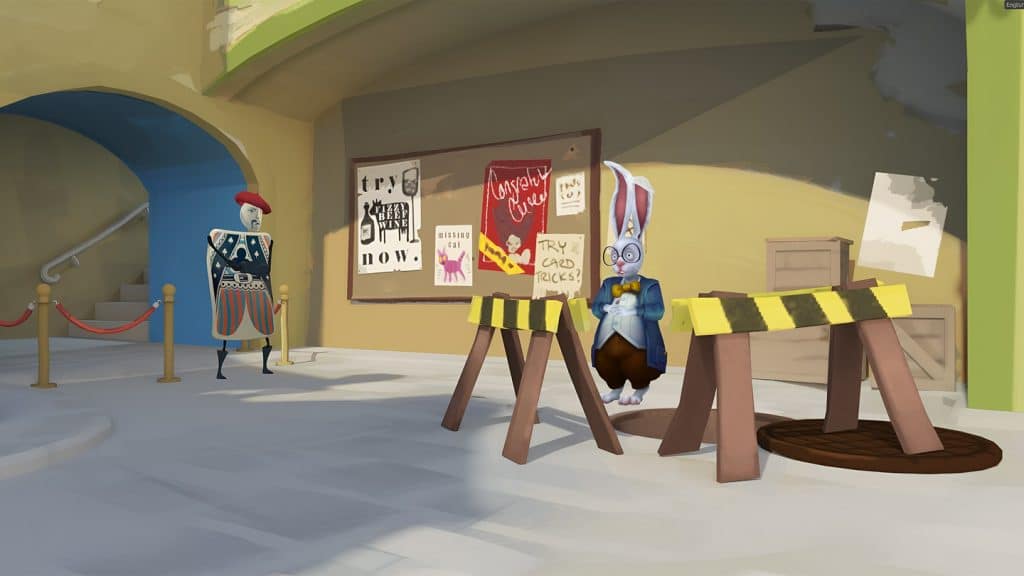
FB
Mårten, did you lean into the Mad Hatter to show this mental health aspect, or are all the characters part and parcel of the mental health theme? Obviously, with the Queen, you know how extreme she is with the whole “Off with your head!” stuff. But Hatter seems to also be a character you could utilize. So tell me about the characters from Wonderland, the ones you leaned into, and then the secondary characters you focused on.
MG
To describe the game for the listener, you're standing in this void, and you have the entire game as a 2D platform spiraling around you. So you lead Molly upwards through the game, and you turn because it's VR, right? So you turn and you see her. And when you've gotten a bit far up, you can look down, and you see all the levels you've climbed up through. So it's basically like you're in the rabbit hole, looking at the whole rabbit hole. As you go through the different levels, you meet a lot of the characters from Alice in Wonderland, like the Cheshire Cats, for example. We interpret all the characters to make them fit the narrative, and some of them have their counterparts in Molly's life in different ways, and they symbolize different things.
FB
So, it was the same way The Wizard of Oz did a little bit. Can you give a few examples of the different characters and how you've reinterpreted them? For instance, you mentioned the Cheshire Cat. How is the Cheshire Cat different in your game and your world?
MG
The Cheshire Cat is actually one of the ones that are quite similar to the original. Molly comes to this place we named the Critter Glade, like the White Rabbit, and everyone used to live there, but the Cheshire Cat has chased everyone away because he wants to be alone. So he renamed it Bitter Glade. It's all cold and snowy and very beautiful and magical, but you can feel the isolation of this place. He just wants to be mean, so he belittles Molly. She gets angry and says, “Oh, shut up, you dumb cat!” Then she shrinks in size because she's literally being belittled. The Cheshire Cat says, “I'm sorry. I didn't mean to belittle you.” Then he pops away, and he keeps showing up and saying mean things, and Molly gets angrier and angrier. The lesson she has to learn is that she can't push people away like the cat has done. So that's what we did with the Cheshire Cat.
Then the Caterpillar shows up, and he's in this big, dark cave where he's sitting on some mushrooms and smoking his hookah pipe. We've rebuilt him very much as a mentor and a guide for Molly. He's quite funny. He hints at what he's smoking in this pipe. Children won't understand, but the moms and dads can laugh at it.
The Caterpillar is basically guiding Molly to conquer her different fears in this dark cave, and later, the player can find a cassette tape that you collect through these different levels. When you listen to the cassette tapes, you hear little splices from the outside world, and one of those snippets, for example, is Molly talking with her therapist. Then, suddenly, you get it. “Oh, shit, this is real.” This isn't a dream. This is something from the real world that you get to listen to. And the therapist sounds quite a bit like the caterpillar. So you can understand that maybe the Caterpillar is a dream version of her therapist who is trying to help her through this.
FB
That's quite clever. I like that a lot.
MG
The Mad Hatter is not a big character, but he shows up towards the end and is quite mean. He makes a lot of jokes that she has created this whole world just to try to get through her trauma, and he makes fun of that. So we've made him into quite a vicious, self-deprecating voice in her head that is telling her basically, “You're mad. You're as mad as a hatter.” She says, “Are you completely mad?” And he replies, “Well, isn't that the pot calling the kettle whack?” Then he starts laughing like a maniac. So we try to have fun with him, for sure, but he's quite a mean character.
PH
We also introduced the player to face cards as they play along. That way, we can showcase what the Cheshire Cat, for example, was like in the real world. During the writing, we talked about what he could represent in the real world. For example, he was a bully from school and can potentially evoke those emotions in Molly at a certain stage in herself. So we had this hidden narrative all around. We thought about how we could translate all of the characters in our Wonderland into real characters and in what way we should convey that to the players visually. We do that through these trading cards. So there is quite a back story. The more cards you get, get more of a holistic view of what actually has happened to Molly and who she is.
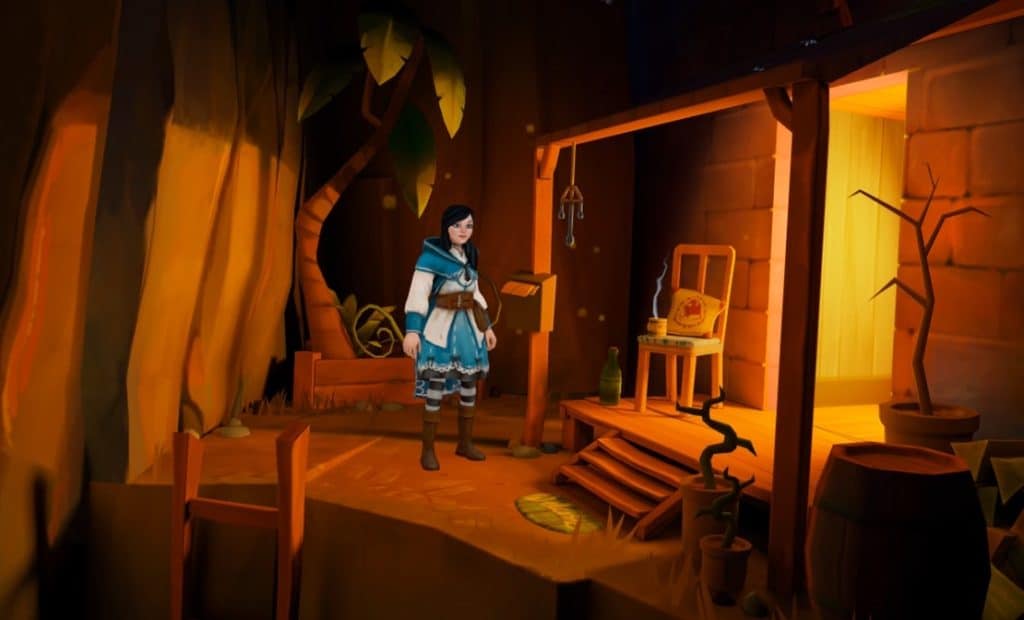
FB
So you can find these cards, do a deeper dive into the backstory, and put those cards together in like a little bit of a deck. That's very clever as well.
Tell me about Down the Rabbit Hole and the demographic that you found really enjoyed the game. Now with Escaping Wonderland, which is a little bit darker, though it still seems like a family game. You mentioned the comedic elements, like with Pixar, where there are two levels. There's the adult level and the kids level. What have you found? Who's coming to this game? Who's playing this game? Who are you after?
PH
It's quite fun because, in VR, it's predominantly male. I would say the majority of players are 30-plus males. However, that did not translate to our games. Down the Rabbit Hole, the first game had almost 50% plus female players, which was very interesting, and this is the group we tried to tailor to. That was obviously pretty hard since there are so many males in this industry, and as a studio, we have a lot of guys in the team. But we really tried to diversify our team and hire women. We brought in a lot of female focus groups to dig into it.
But I think the main focus of our game was not to make it dark. We always had the discussion, “What should the feeling be when you play?” It's very tough in VR because you have these short spans in which you play. You have these core sessions that are about 20 to 30 minutes. Then you want to leave the headset. So if you are too rough on the edges, if you are giving the player too tough of a time, they will have a hard time returning. So that was quite a challenge. From the baseline, when you start off, it's pretty whimsical down there in Wonderland. We sprinkle the narrative throughout, but in the beginning, you don't really see it come through. It comes to life the more you play, and that’s really when it grabs you. But we really try to address the female player. That's why we have a female protagonist. We have situations in the game that are tailored toward the female audience.
But our publisher, the head of publishing, is female, and she was obviously scared of us as a male studio. Which was very understandable, right? Can we really do this? Can we pull it off? But Mårten has written two or three books with a female protagonist, so he has experience in the matter. Then, for us, it was the story. A good story is a good story, and it's relatable to any type of person. But we really wanted to have the female players because when you get them, they’re such a devoted fan base. So the more we try to lean into that, the better it is.
FB
What's the difference between extended reality, virtual reality, augmented reality, and mixed reality? Because those are all game descriptions in the bio. Can you give us a quick tutorial?
PH
Augmented reality and mixed reality are very similar. You see the world you're in, like Pokemon Go, for example. You see the world through your camera, but there are graphic elements in it. You can project stuff on surfaces and walls or whatnot. It’s a mix. We were thinking if it was possible to put this game in mixed reality because Meta is always asking for those kinds of game experiences. But we really wanted to immerse the player in VR so they’d put on the headset and embrace this lovely world of Wonderland. But that's the baseline. Mixed reality and augmented reality are a mix of reality and fictional elements.
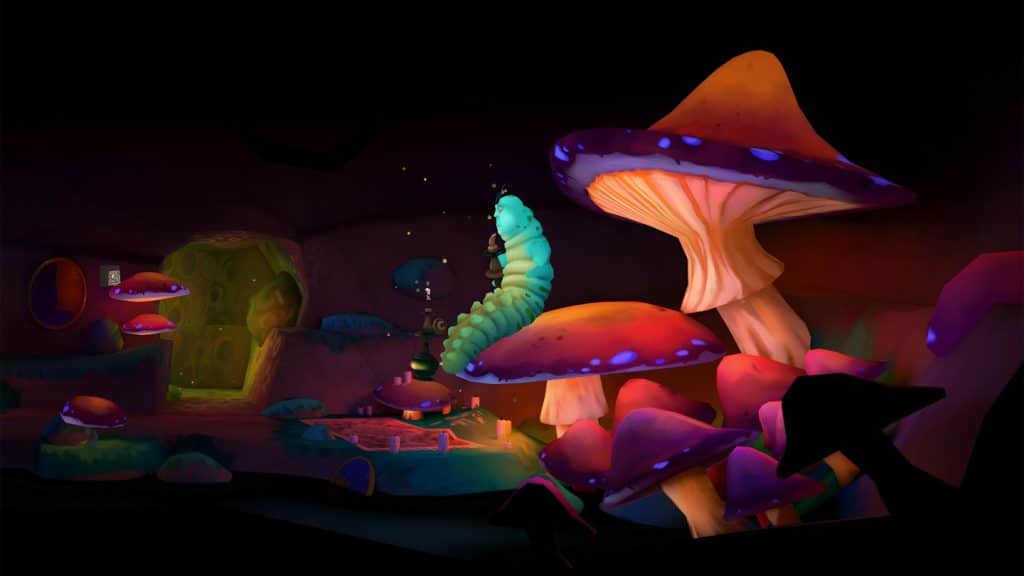
FB
How is Meta to work with?
PH
Meta been supporting us all the way. They always had our backs. They're a good partner, and their feedback has been valid throughout.
FB
Mårten, why do you think Wonderland still resonates? Why are we still using Wonderland as a jumping-off spot in 2025, almost 160 years after it was introduced? What do you think is the fascination? Can you pinpoint for yourself what resonates with this story? The original story, Alice’s Adventures in Wonderland, is very episodic. Alice has agency, but not the kind of agency we’re used to in stories with the reluctant hero, the Chosen One. In Alice, it's arbitrary, and the chapters could be switched around, so it wouldn't matter. But yet, we keep coming back to it. But do you have a theory on that?
MG
I think you were onto it before when you were talking about the whimsical versus the nightmarish. There is something really original with this world, where you mix the real and the dream. If you think about David Lynch, he’s one of the people who has captured dreams on film in a way that feels like a dream because it doesn't make sense. I think Alice’s Adventures in Wonderland and Through the Looking-Glass are for books in a way. They capture what it feels like to be in a dream, nothing makes sense. Everything's a little bit goofy and whimsical, but in a way that makes you think, “Is this creepy? I'm not sure. Is it just magical and wonderful, or is there something sinister under the surface?” That's my interpretation of it, at least. I think it’s this mix of whimsy and psychology. Everything feels like a very fundamental allegory for the human psyche and human dream state. In the Tim Burton films, they try to make her the Chosen One. They try to make it more like a high fantasy story, but I feel like that's not what draws you to it. You don't want Alice in Wonderland to be Narnia or to be The Lord of the Rings. It's its own thing.
FB
Speak for yourself, my friend. You haven't read The Looking Glass Wars, apparently. Now, stepping into my territory, I might take issue.
MG
Sorry, sorry. Well, I think it's a different thing to try to reinterpret Alice rather than do a traditional adaptation.
FB
No, my point is there are so many ways to interpret Alice, but fundamentally, everybody is going to have their own ideas. Wonderland is a place to escape reality, where reality, fantasy, and fiction are all mixed up. If you look at politics in America, you'll see that facts are no longer facts. So, Alice in Wonderland was often referenced when talking in a political context. In gaming, I came across another game called Across the Wonderlands, which is a survival game. So you can take Wonderland and use that idea in any number of ways.
I was on the U.S. Ski Team for a number of years, and “Winter Wonderland” was thrown around all the time. So Wonderland was a magical, whimsical, beautiful place for us to go to. And “down the rabbit hole,” whether it's used in reference to the internet or politics, whatever “down the rabbit hole” is, gets used every single day. I'm sure you noticed that when you started writing in this space, you can't escape it. It's everywhere.
Has that been helpful in terms of having an IP to base the game on in terms of getting attention or in terms of Meta feeling like, “Oh, you have an IP already?” Look at what happened with Wicked, the musical based on The Wizard of Oz. We're doing the same thing with Alice in Wonderland in the game space. Has the connection to Wonderland helped?
PH
Absolutely. It's a strong IP, and everybody knows about it. Everyone has their own impression of what Wonderland could be. Alice in Wonderland has massive appeal, and it helped greatly.
FB
In which countries have you had the most success? I bring this up because Japan has the most editions of Alice in Wonderland of any country in the world. So, I'm wondering if you have a sweet spot in terms of countries around the world.
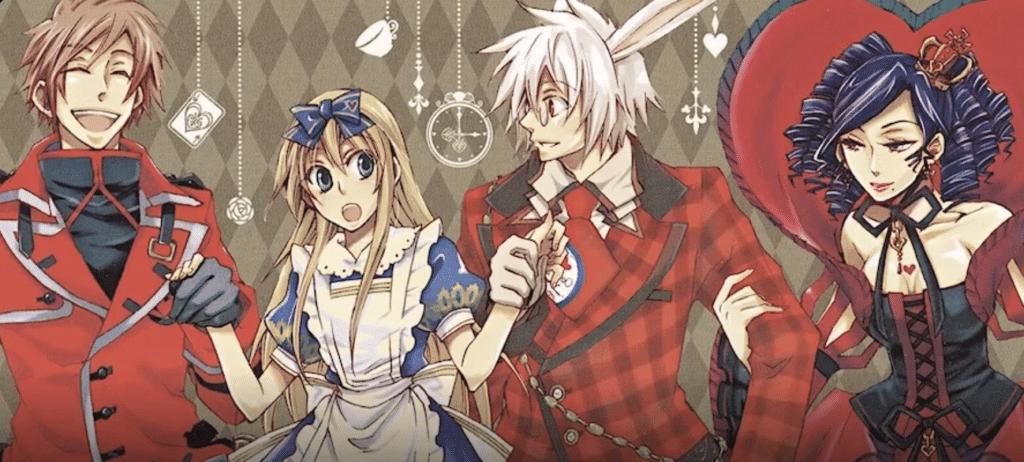
PH
The U.S. is our main target. But I think it's also due to the platform. There are so many people who own a headset in the U.S., so I think that's why we haven't sort of dug any deeper when it comes to breaking out per user.
FB
In terms of quantifying success, how does one do that with VR headsets? Is it based on how many people play or how long they play? How does one know if they're on the right track and if it’s making financial sense?
PH
First of all, you see the amount of copies sold. Then there is the rating on the store, so you can see what kind of rating the game is getting. Escaping Wonderland is getting super, super awesome ratings. I think it's on a 4.8 out of 5. It’s really up there among the top sellers on the Meta store. The reviews have been through the roof, so it's absolutely perfect. We couldn't ask for more. However, the first game had a bit of a slow burn. Normally, in games, you used to see this; it’s sort of changing now, but you would have huge sales the first week or first days, but then it drops quite rapidly.
VR is somewhat different, especially in this game. So it's on a slow burn, but it's steadily growing, so people are discovering it. We get a lot of attention through podcasts like yours, Frank, and our voice cast. They are very well-known actors, and they committed so much to the story since the topic really spoke to them, as well as the mental health aspects. So they've been helping us promote the game a lot, just because they saw it and they loved it to that extent.
Plus, we are getting feedback from users, not just about the game and how it’s a fun experience but also about how it actually helped them in their real lives. Mårten and I were discussing a video the other day of a person who released this video himself, saying the game changed his perspective on life and really took to him. It was one of those emotional moments that you wouldn't wish for, but when you see it, it's really rewarding. It's really, really not just down to the sales at the end of the day. It's really down to emotions. If we can awaken those emotions, then we know we're on a good track and that the game will probably sell over time since it's a great experience.
FB
I think what you're talking about is really, really important. As a creator, you’re not creating for the sales, you're creating to share something. I don't need to dig into what tragedies your team has had, but the fact that it’s fused with what you're doing, people feel that. When you have a response like you just described, people are reading between the lines and picking up on the feelings.
When that transfer of energy and creativity gets bounced back to you, it's a really profound, emotional moment where you think, “Okay, I've connected. What was in my mind has now gone out in this collective world and is coming back in terms of this feedback, and that feedback loop is why I do what I do.” Yes, it's great if you sell a lot of copies, but you are sharing something about yourself that's specific, and doing that is where the real work is, where the real joy is, and where the real satisfaction is. So I think that it's pretty profound that you're having that experience with your game, and kudos to you for sharing and for having that success. That's what artistry is really about, right?
PH
I agree one hundred percent. But fingers crossed, sales will pick up.
But I think you're a hundred percent right when it comes to ingenuity and the take on the subject. But we're here fronting a team. Mårten obviously did a lot of the writing and did a nice job there, but there are so many stories being told through the art, the music, the puzzles, and then by everybody in the team. There's so much love in the space. It was really this passion project that you dream about being part of, where everybody has this holistic view of where we want to go with the project and the story we want to tell. So we're just two guys fronting what a team behind us has really been pulling through.
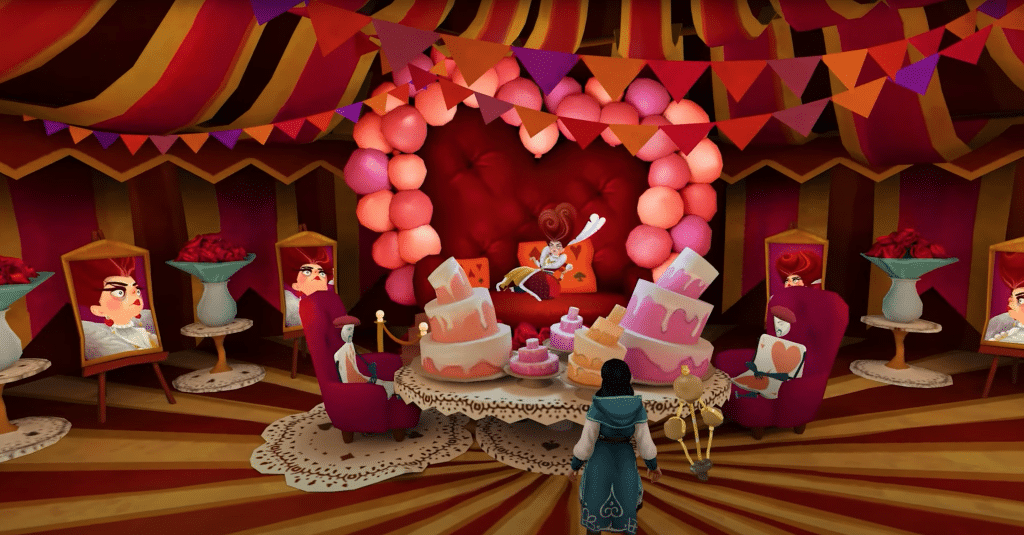
FB
Games are a collective and it's a big team effort. Speaking of the art, how did you land on the art style? You wanted to stay close to the original game, but then you expanded. In Escaping Wonderland game, there's what looks like an engineering room, and you have the big clock. The Caterpillar design is really interesting and fresh, but the Cheshire Cat is a sort of familiar color palette. Was there an art director? How did you guys land on the art style?
PH
Obviously, the art style had a legacy from the first game, Down the Rabbit Hole, and it was really fun because sometimes art-by-accident happens, right? When they started to create the first game, they had a bunch of 2D artists in the studio. They did not have 3D artists. So what that meant was figuring out how to facilitate those guys within the game creation. So they hand-painted each of these environments. That's why it very much looks like a theater set with props. It's very layered. There are not that many assets in it. There are some assets, here and there, that you can interact with, but it's mainly built as a stage with this very unique art style that is very appealing.
So, going from Down the Rabbit Hole to Escaping Wonderland, we wanted to keep that style. But then, like you said, “Okay, how do we expand on that? How do we expand on the characters and environments?” One thing that came into play, which we talked a lot about with the art team, was that when it came to environmental storytelling, we were always asking, Who has been living here? What does this room represent? What do we want the stories to say? How do we translate the story? If this is going to be an estate, what would happen? We have mice living here. How do the mice go about their everyday life? How can we translate that to the art on the wall? How can we spark some of that humor throughout the environment and, by doing that, still keep the whimsical stuff? That was also a big part of the storytelling when it comes to every artist having each room, how should we approach it? What is the status of the player coming into this? This is our low point. So it needs to be pretty dark. What do we showcase here? What kind of symbols could we potentially add here that add to that?
FB
It certainly sounds like your background in movies and television would come in very handy when you're taking the environment and turning it into a character. It has to be a character because you're going to be hanging out there. You're going to be peeking around all the corners, so you're going to really have to think deeply and provocatively about how these environments are affecting the players.
Now that you've created Wonderland, do you have any aspirations to go to Neverland or Oz? Or, Mårten, the name of your book series is Alba and the Land Beyond. Is there any reason we can't go to Alba and the Land Beyond?
MG
Every time we have an afterwork, I try to “inception” Pele so that they could make games out of my books.
FB
So what's the holdup?
PH
Nothing. He nagged me down, but my defenses are awesome.
FB
Let's make a deal right here. Let me try and broker a deal.
PH
It's a beautiful book. It's absolutely fabulous. But to your point, this is something that we have talked about. We have this very beautiful diorama mechanic, which is very intriguing. What other IPs could we pinch this on? And what other IPs could we explore in this same setting? There are really no limits to it like you said. We could go anywhere with this, but obviously, we're not that rich of a company, so it still has to be in the public domain. But it's still a possibility, and we're really looking into it. We just hope, like you were talking about, that as long as the game's doing well enough, then it makes sense for another one.
FB
So Escaping Wonderland has been released.
PH
Yes. It's out on the Meta store, and it has gotten a lot of use. We'd be happy to send you a copy, Frank, so you can try it out. Since you're so invested in the IP, we would just be thrilled to have you looking into it.
FB
That’d be great. And folks interested in seeing the trailer can go to your website or Google it. And if they're interested in the game, they go to Meta.
PH
Meta store for buying the game. If you have a headset, it's very accessible. If you want to know what it's all about, Google “Escaping Wonderland VR,” then it will pop up, and you can see some videos. There are also a couple of playthrough videos, so you can see other people playing and see how much they are enjoying it.
MG
Check out some reviews if you don't trust me and Pelle. It's gotten quite amazing reviews, fours and fives everywhere. And we got an award a few weeks ago.
PH
Yeah, for best storytelling in games. We aspire to be nominated for multiple awards.
FB
Well, before we leave, if you were a character from Wonderland, who would you be, and why?
MG
You know, when you come to a certain age, you always land on the Caterpillar, right?
FB
Yes, as you get older, you lose more hair.
MG
Also, your main character days are over.
PH
I still feel like Alice.
FB
You're still on an adventure.
PH
No, I feel like I snap between the White Rabbit and Dormouse like I'm just stressing around, and then I'm just lazing on the couch, sleeping,
FB
Speaking of the Dormouse, just tell me the inspiration for the trap as an exercise device.
MG
I don't remember who came up with that. One of the puzzles is about finding four little mouse kids because their mother has yelled at them and they’ve run away, so you have to bring this mouse family back together. All the kids are doing something really dangerous. So you go to the gym, and the mouse kid is working out with this mouse trap and doing some Fast and Furious references like a gym bro. Then another mouse is building a sand castle with rat poison and talking about how it's making him feel like he’s flying. We've got one sunbathing in front of an oven, and another is walking a tightrope.
FB
There's a lot of black humor, and there's a lot of whimsical humor. I know my very twisted audience and the Wonderland fanatics will be really interested in checking out your game. Thank you both for taking the time and congratulations to you both and the whole team for your trip to Wonderland and for bringing us along with you. Kudos to all of you for your creativity and sharing your world with us.
MG
Thank you so much, Frank, for having us.
PH
Thanks a lot.
For the latest updates & news about All Things Alice, please read our blog and subscribe to our podcast!

